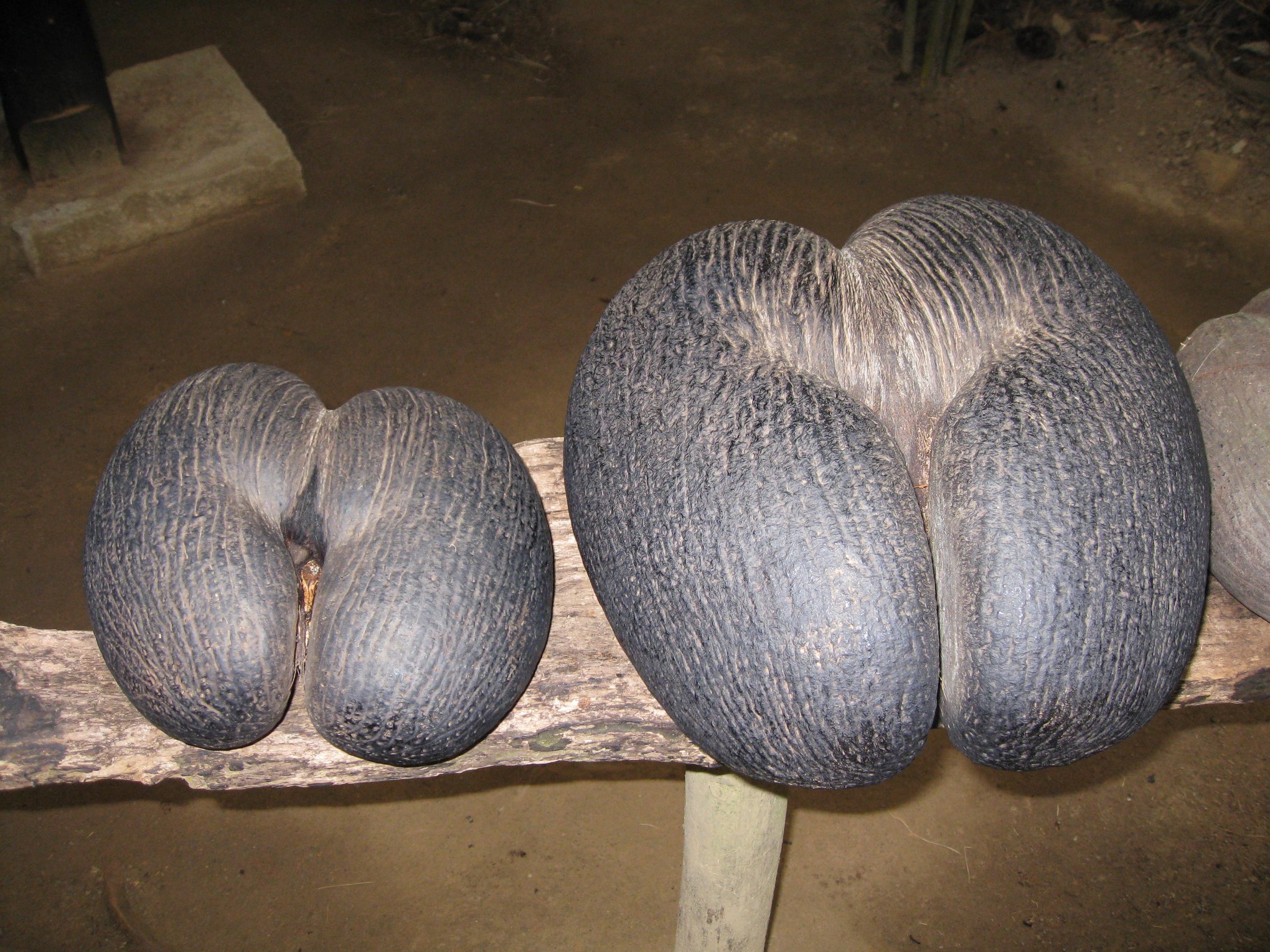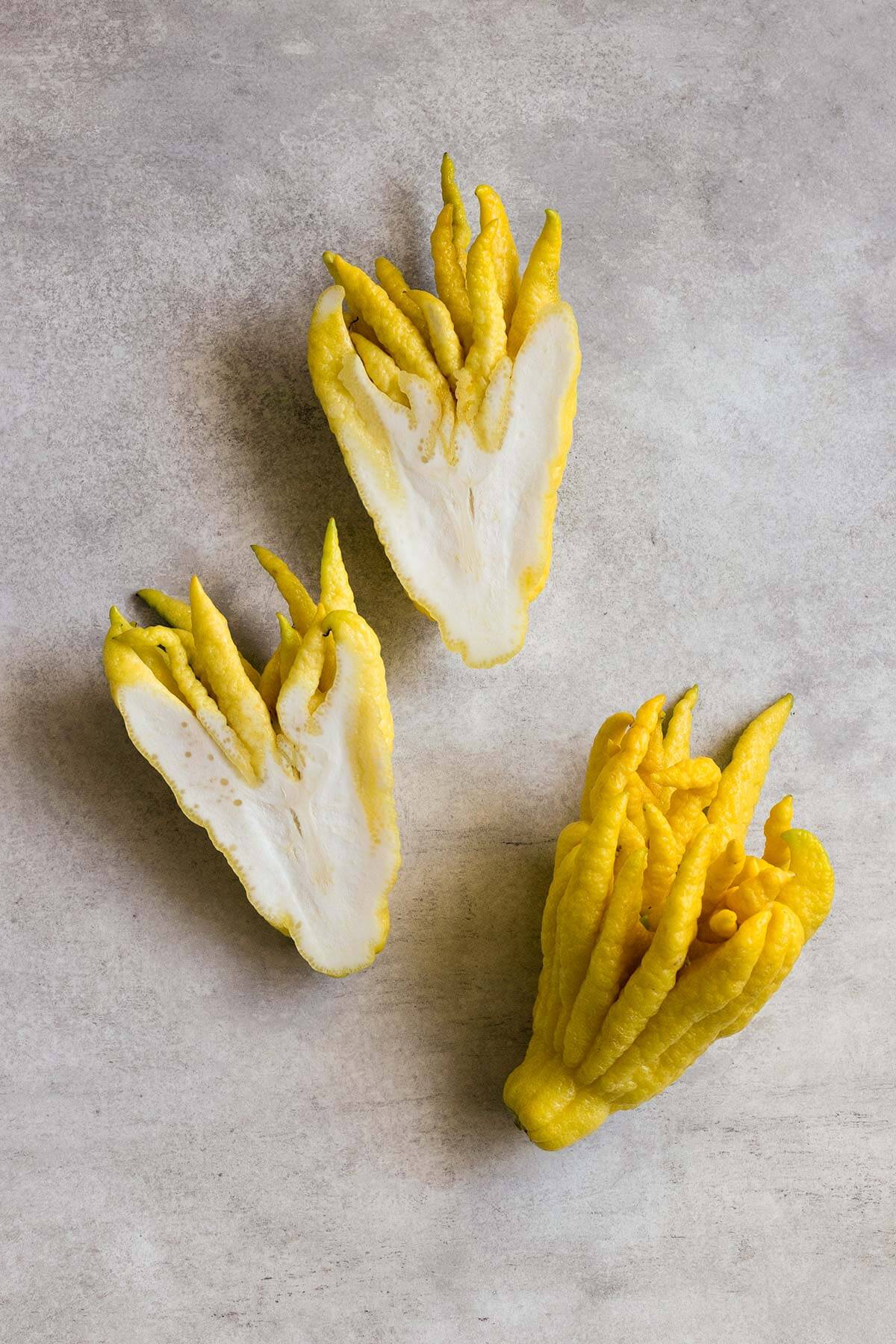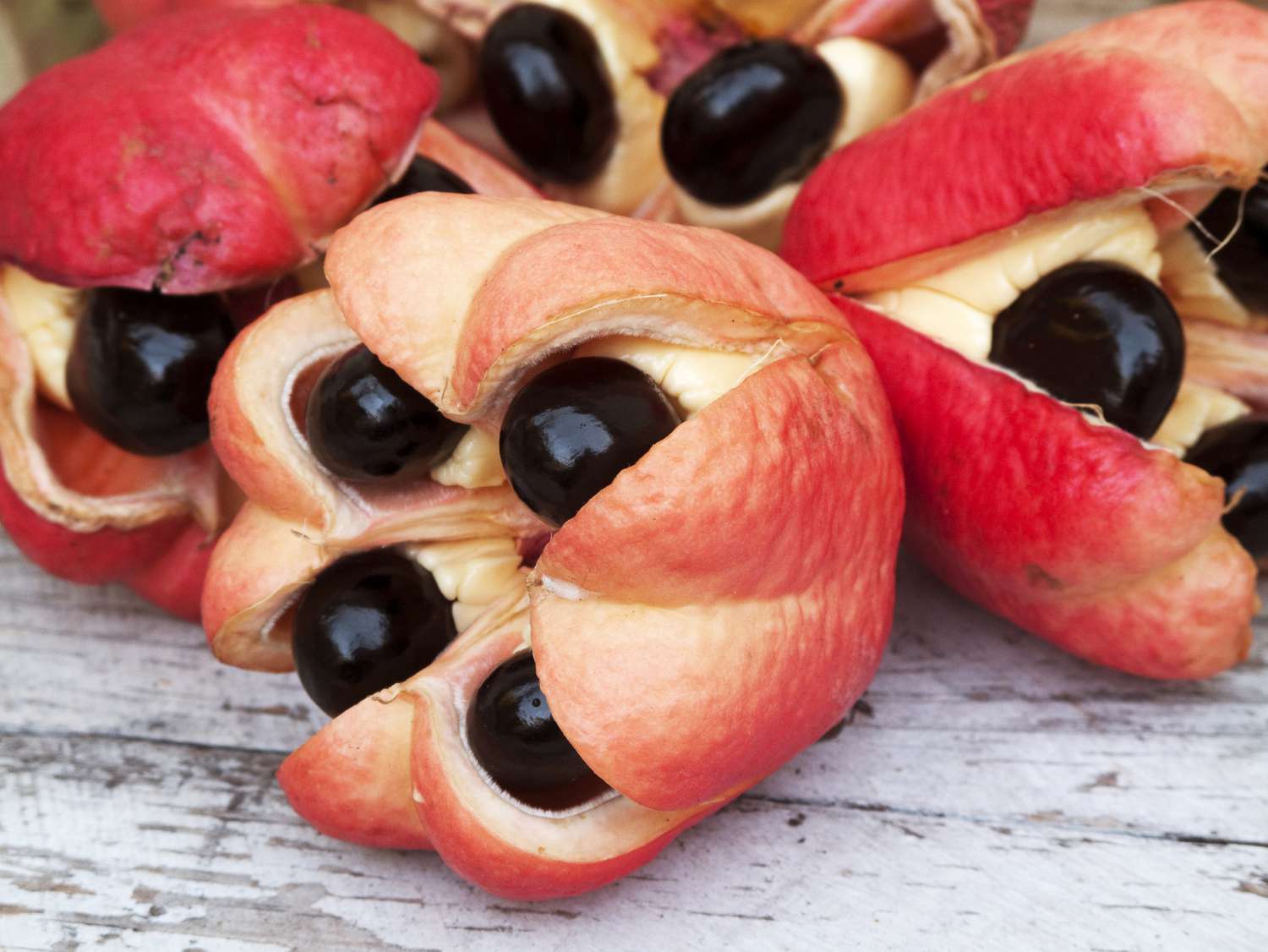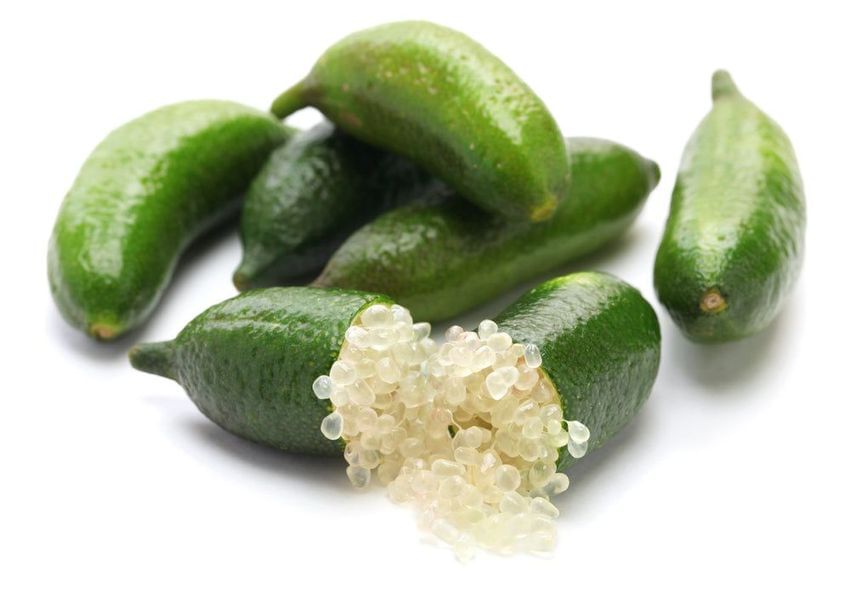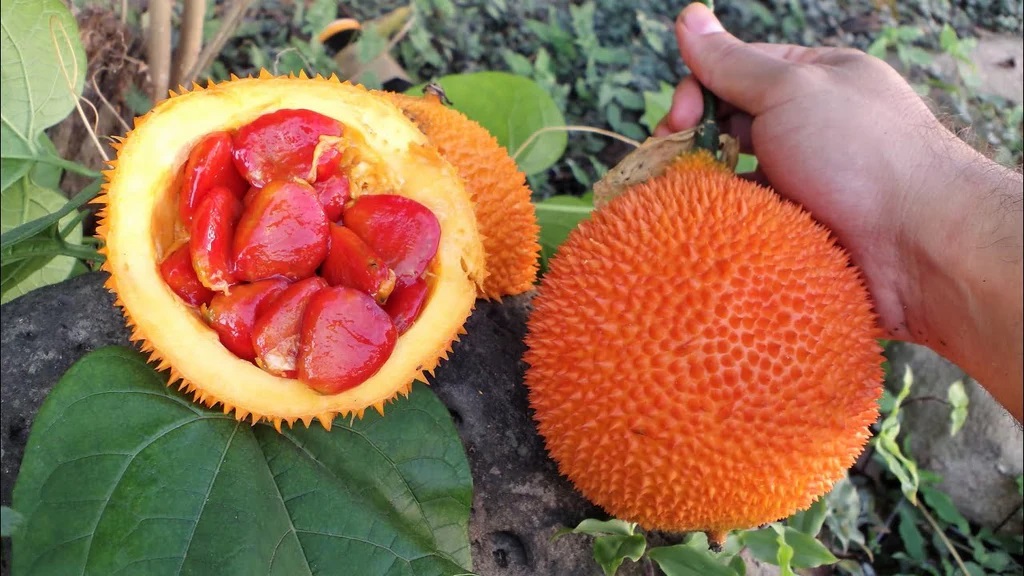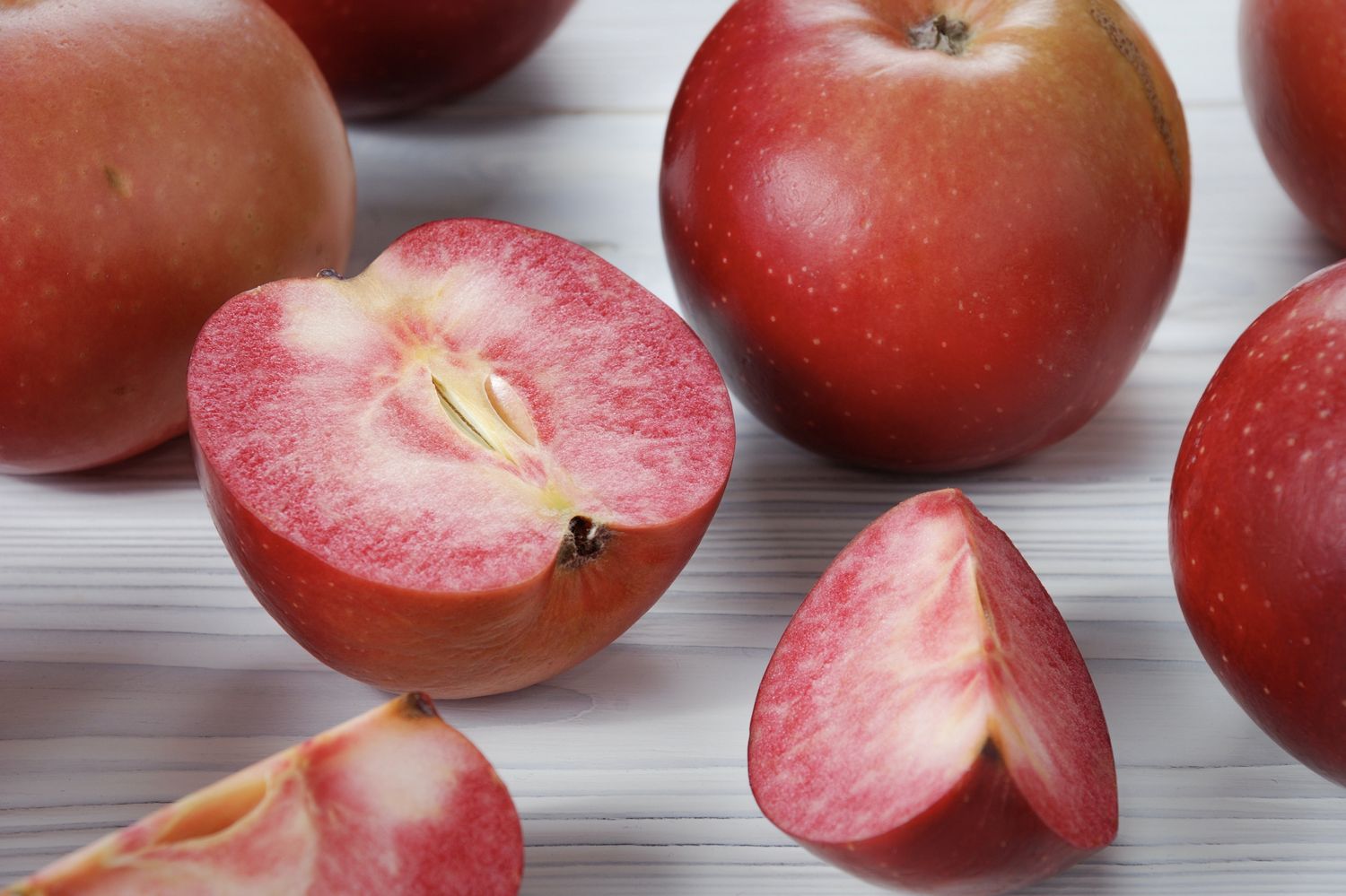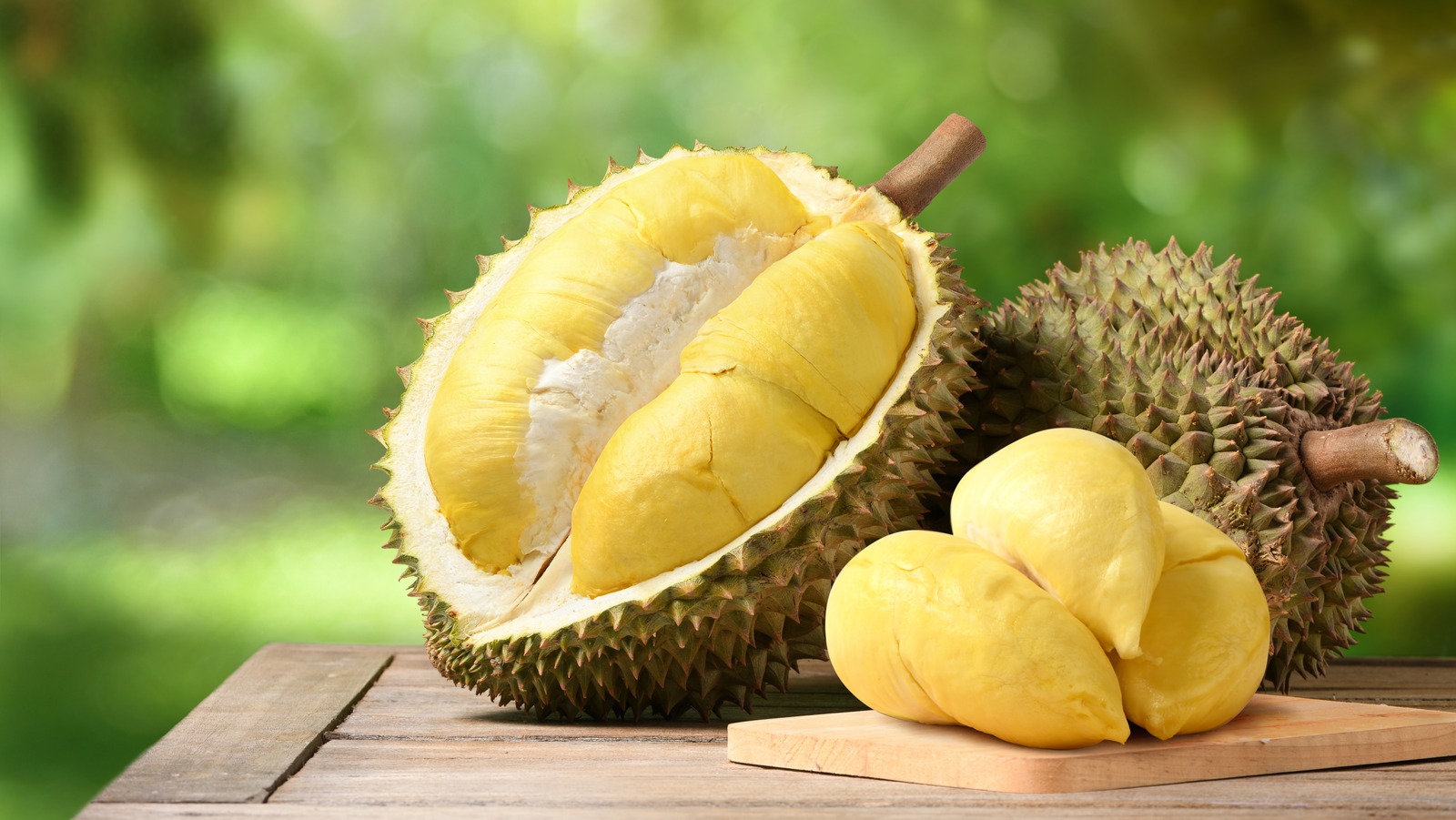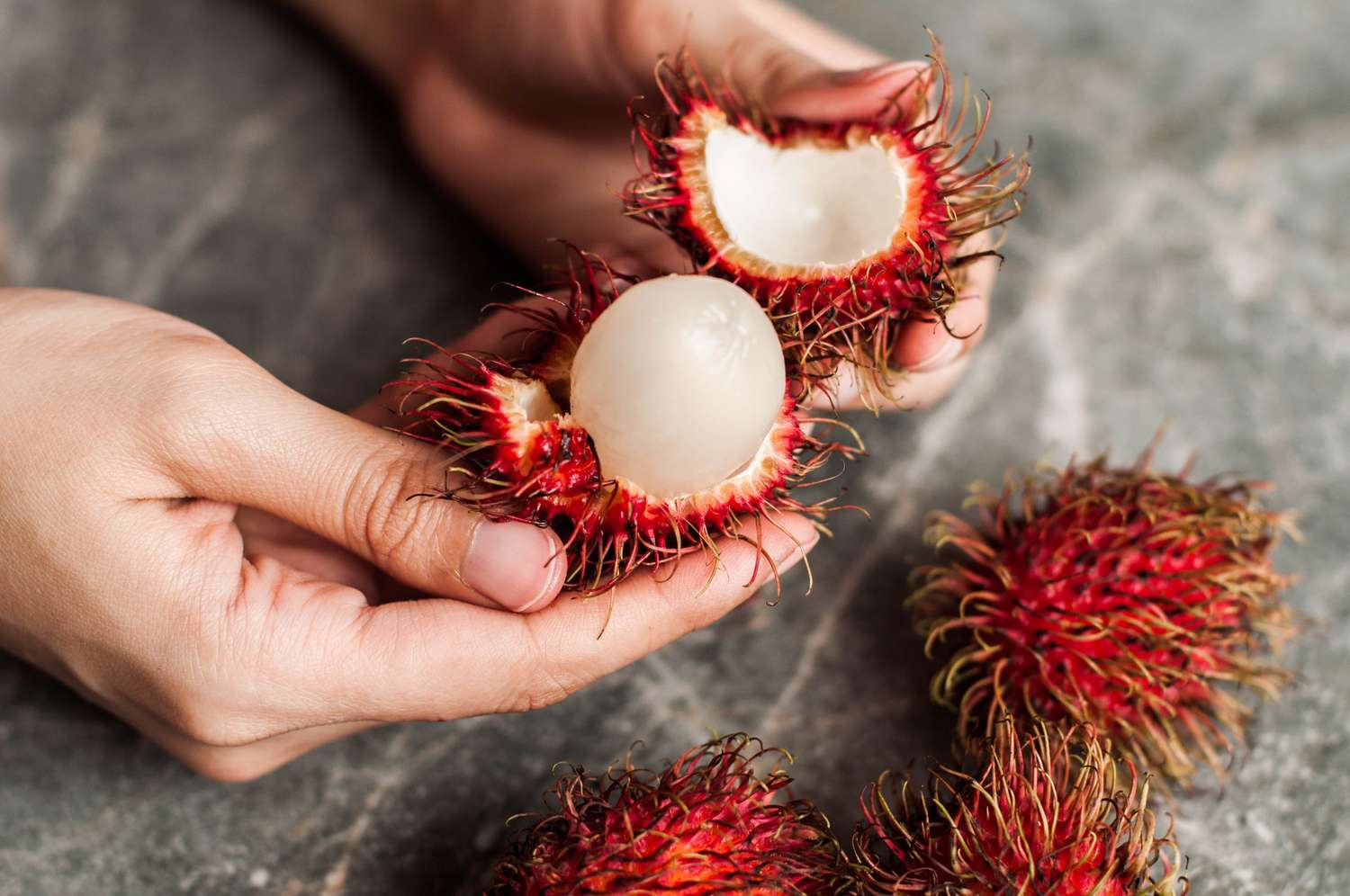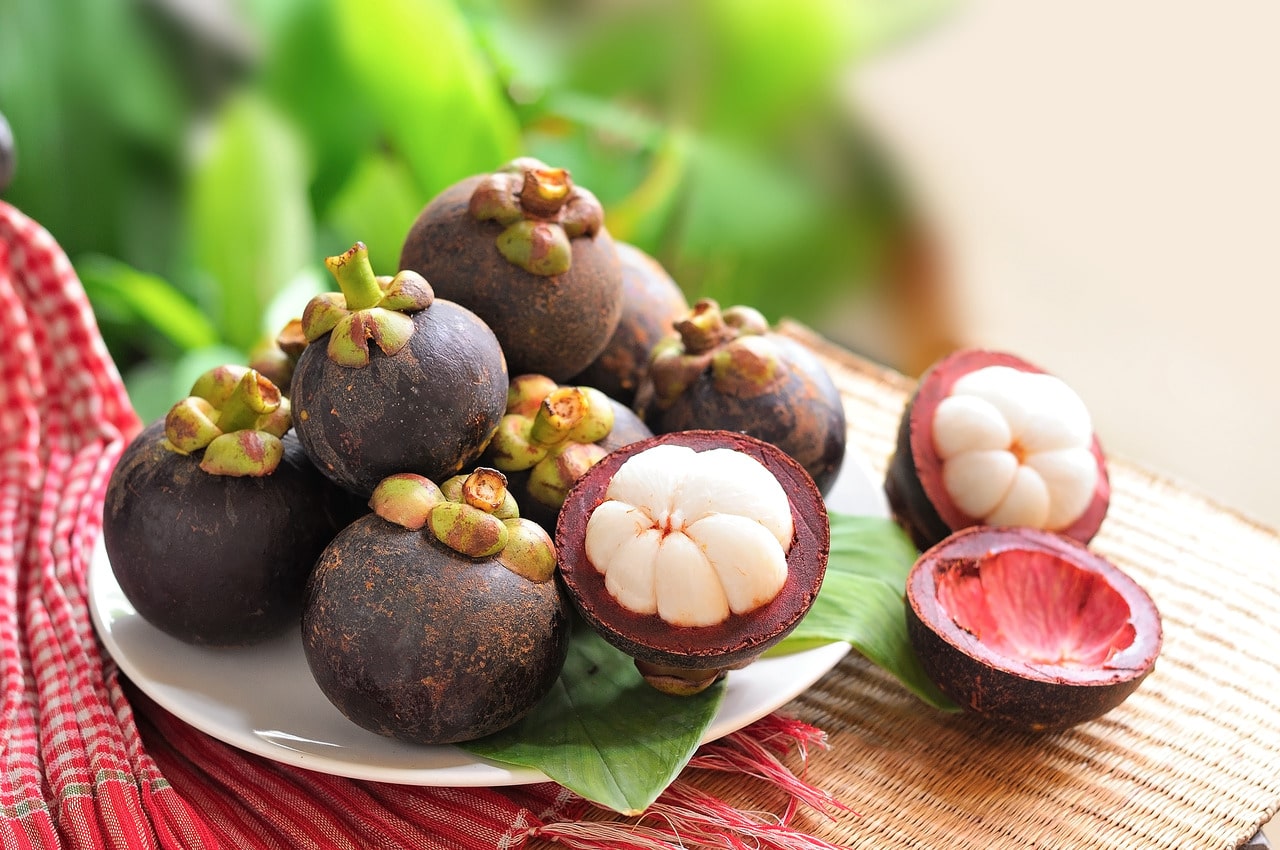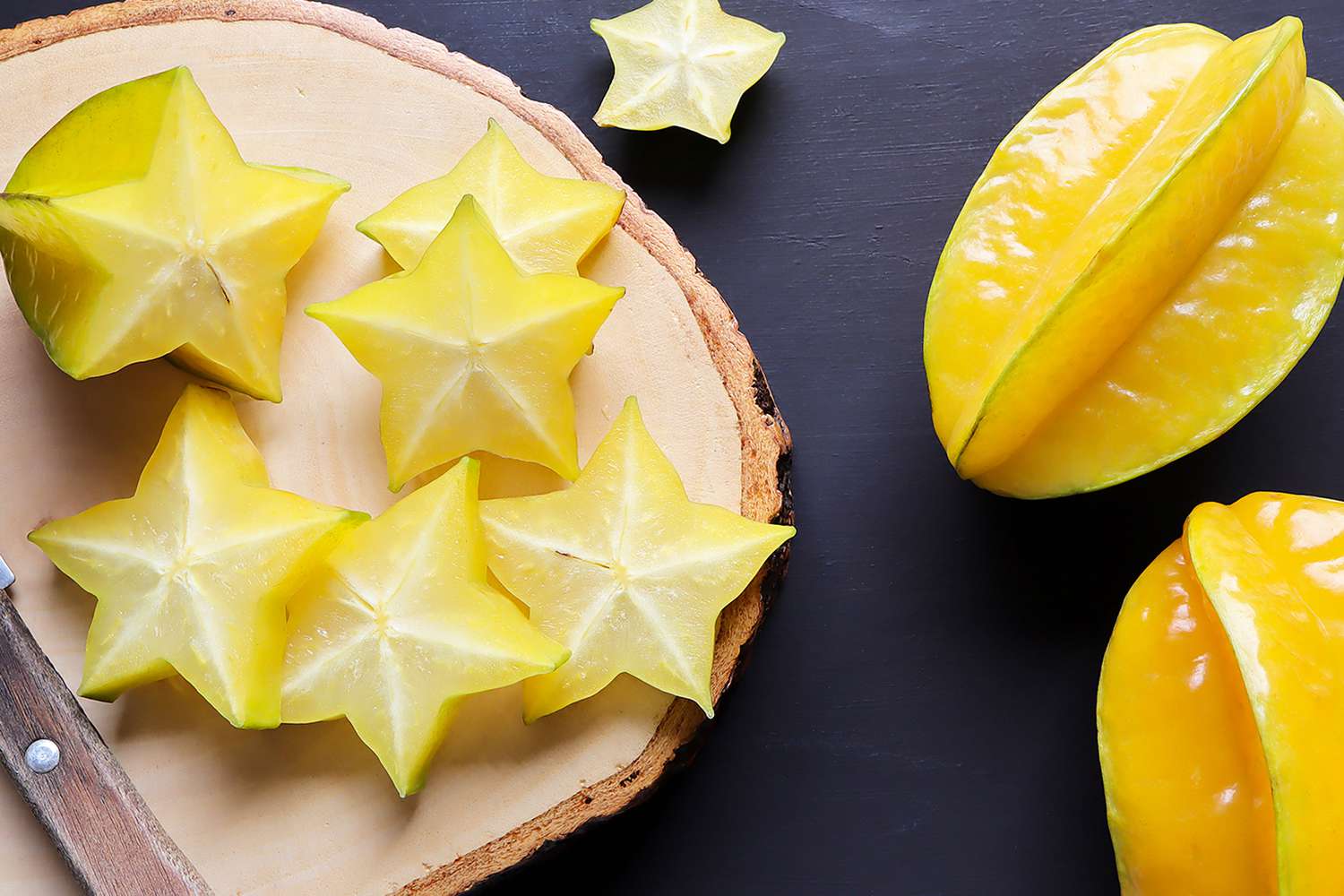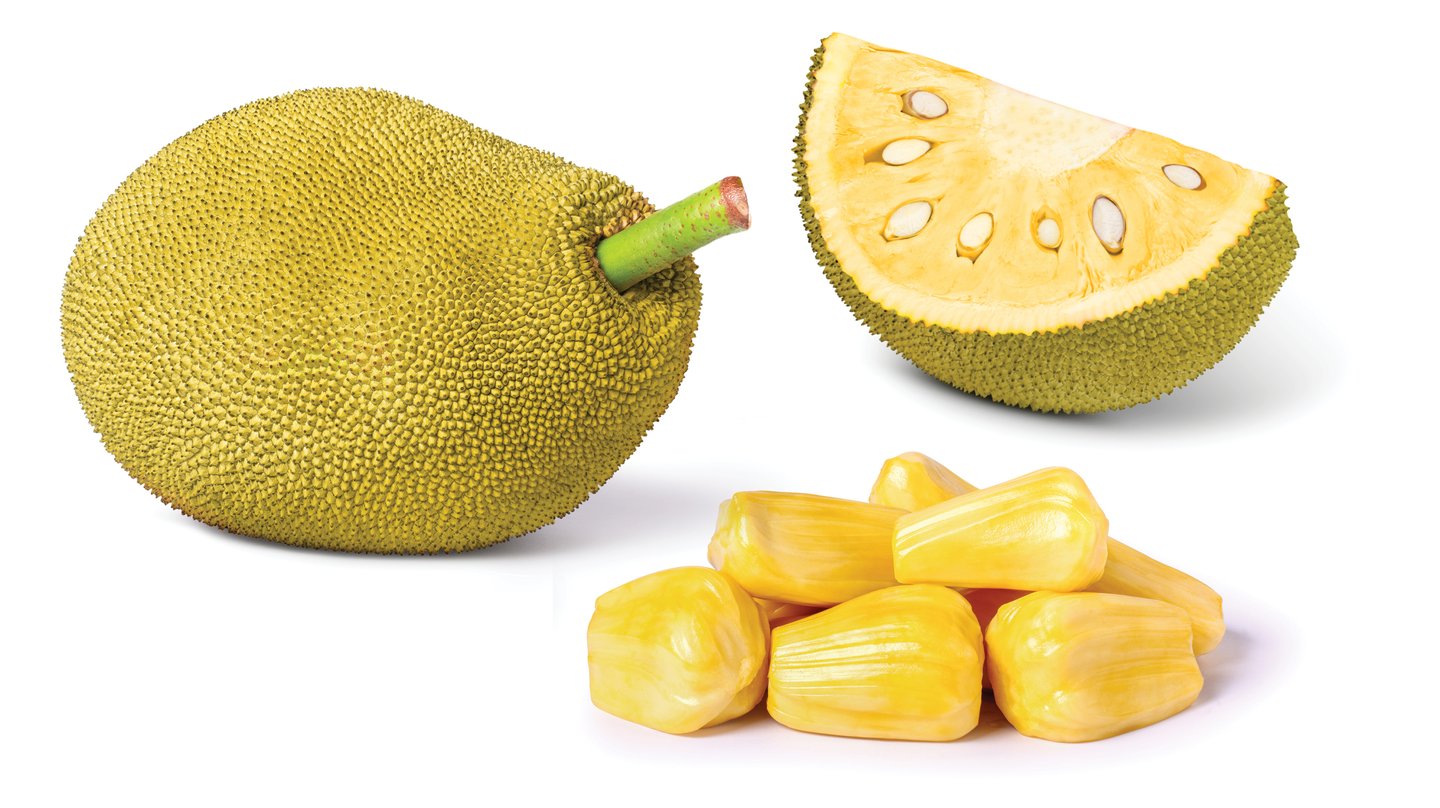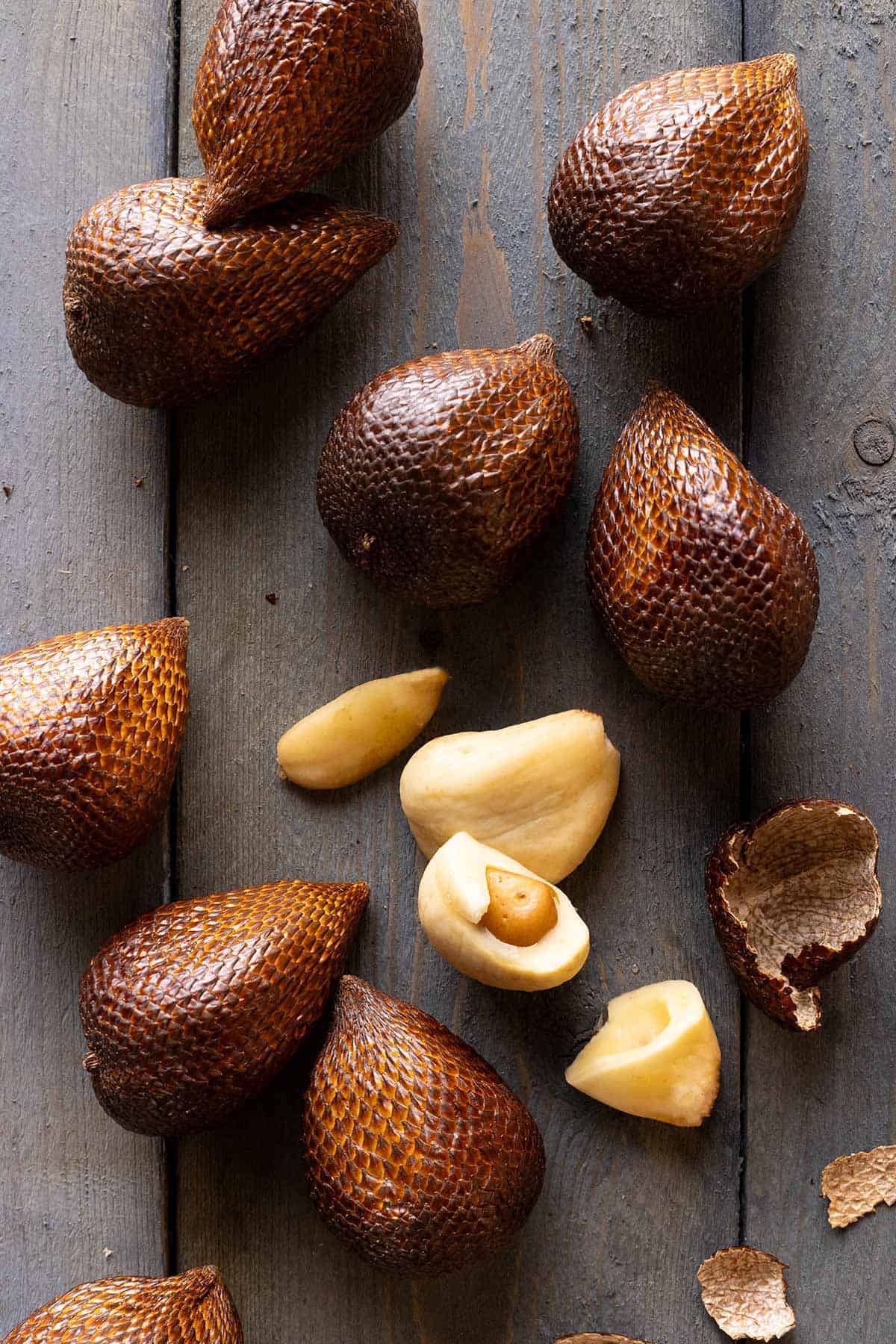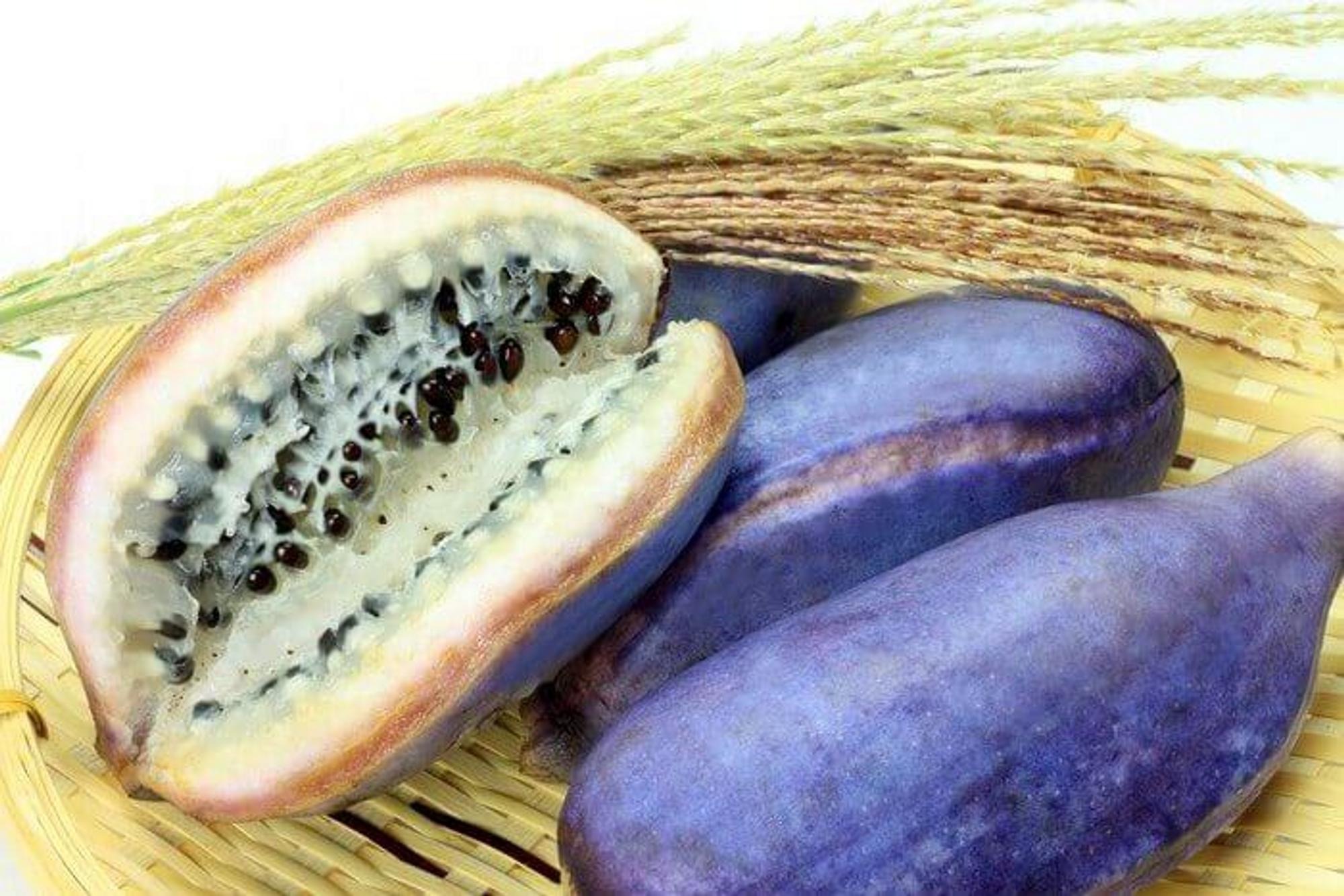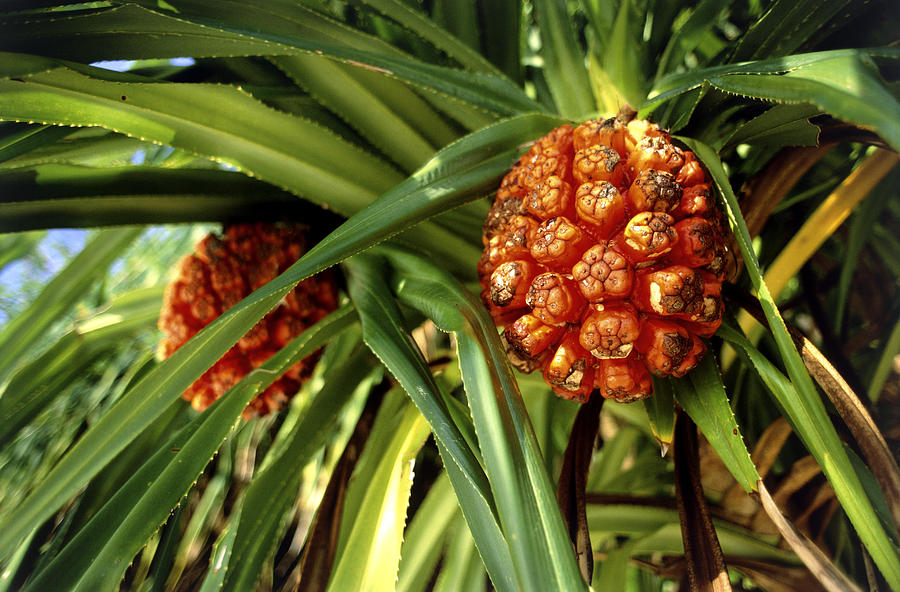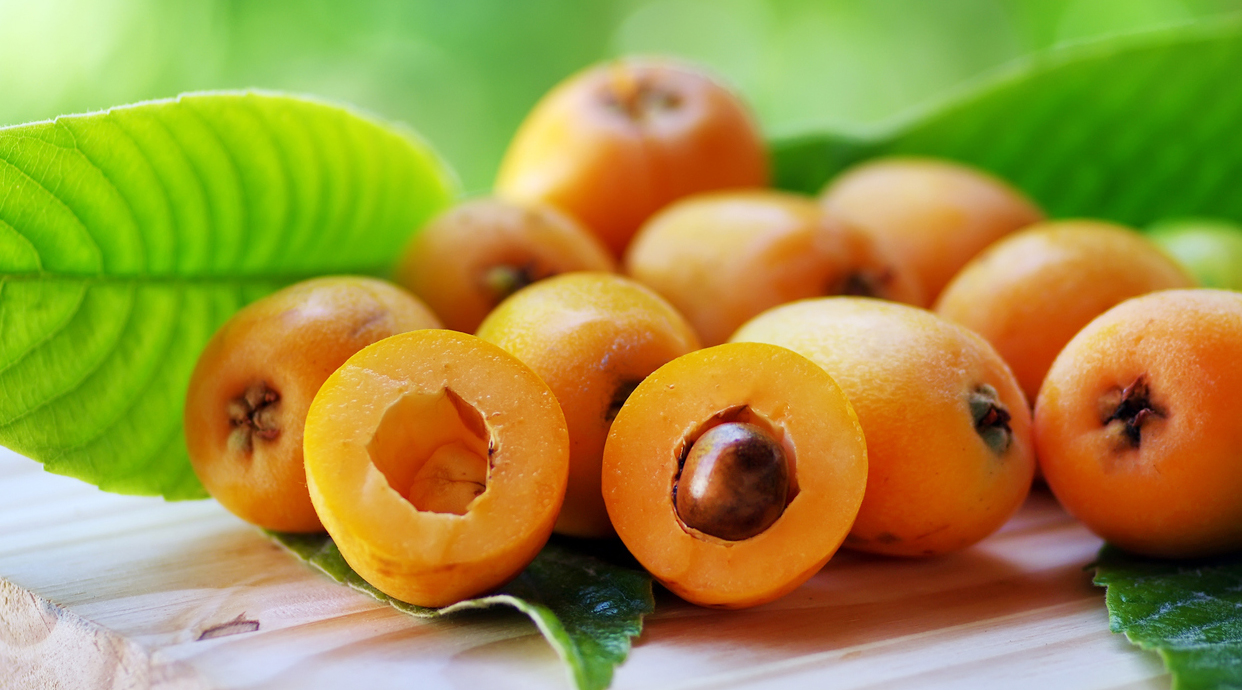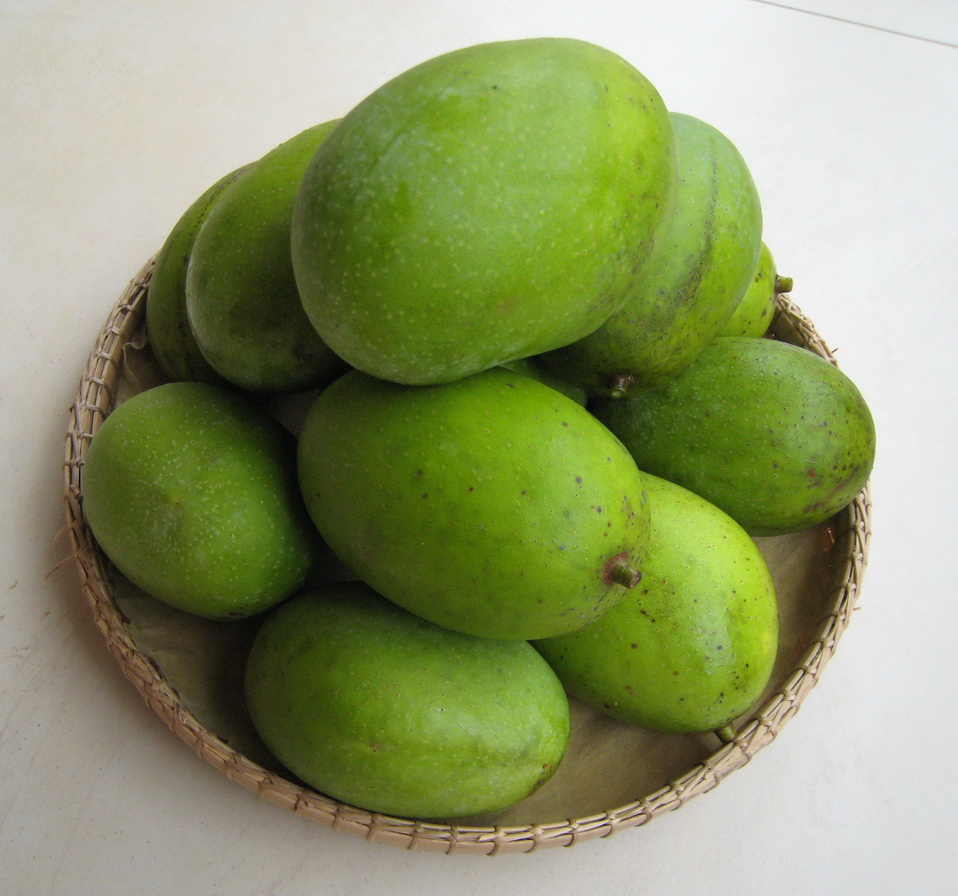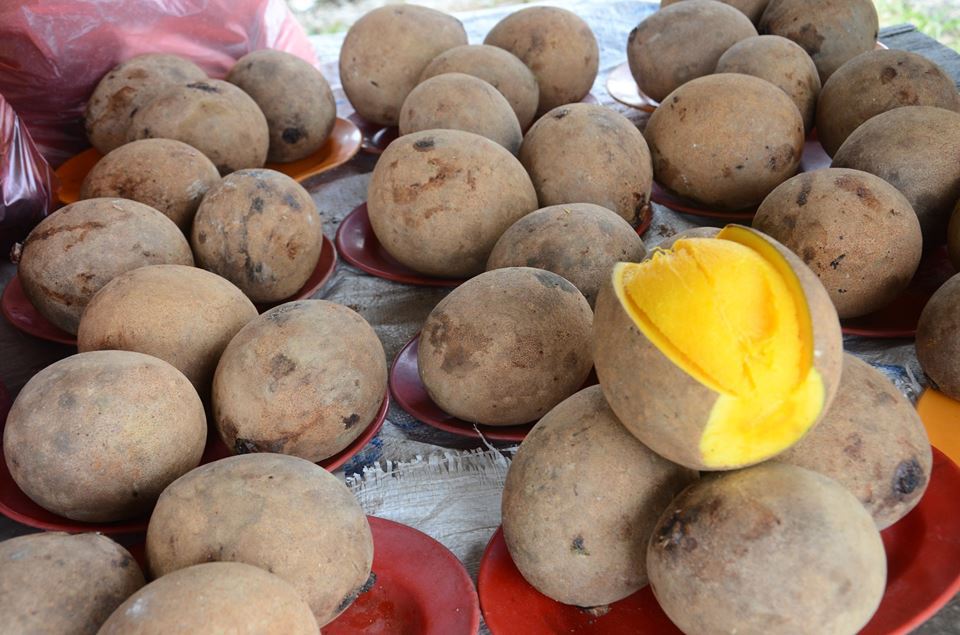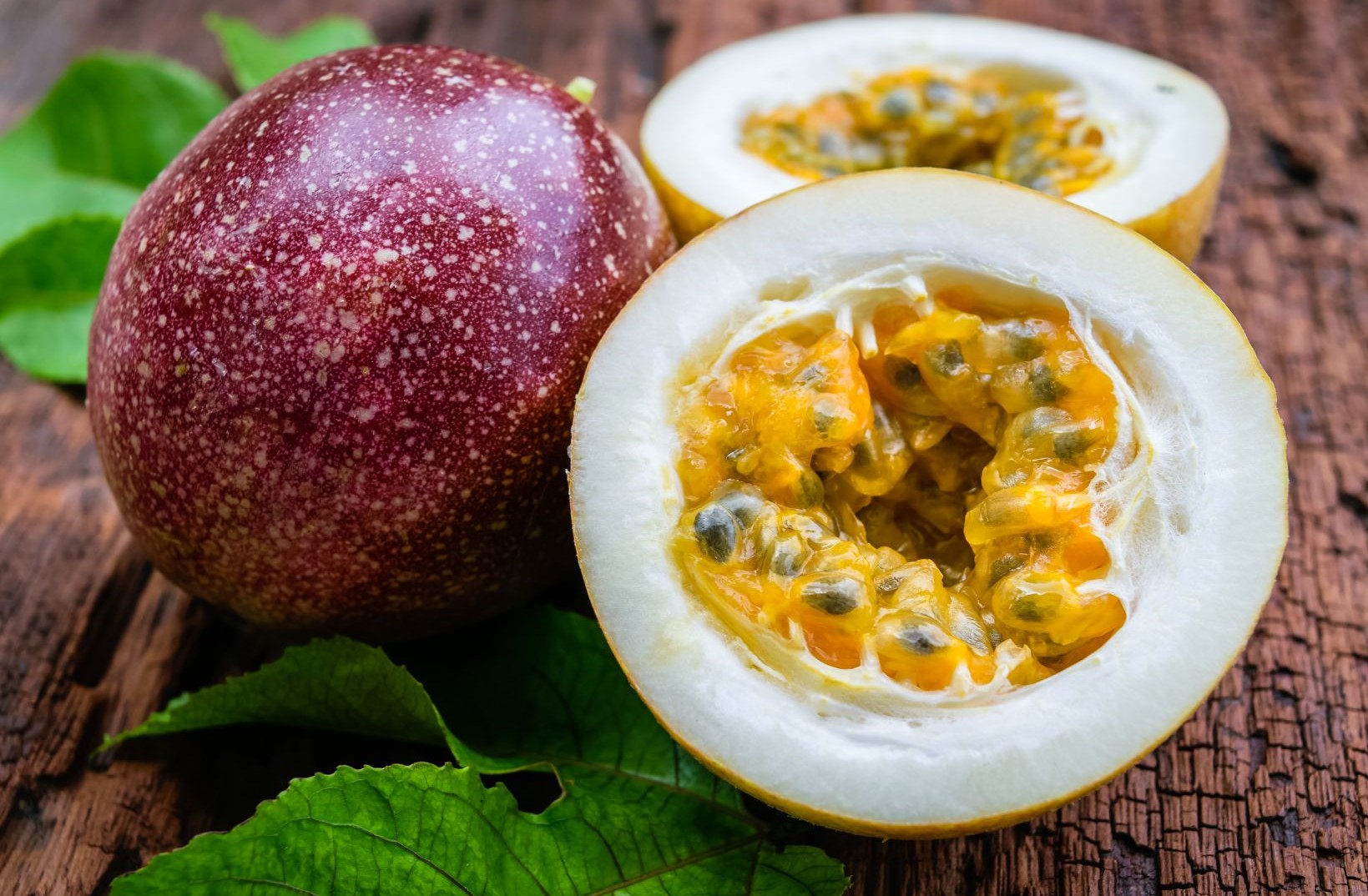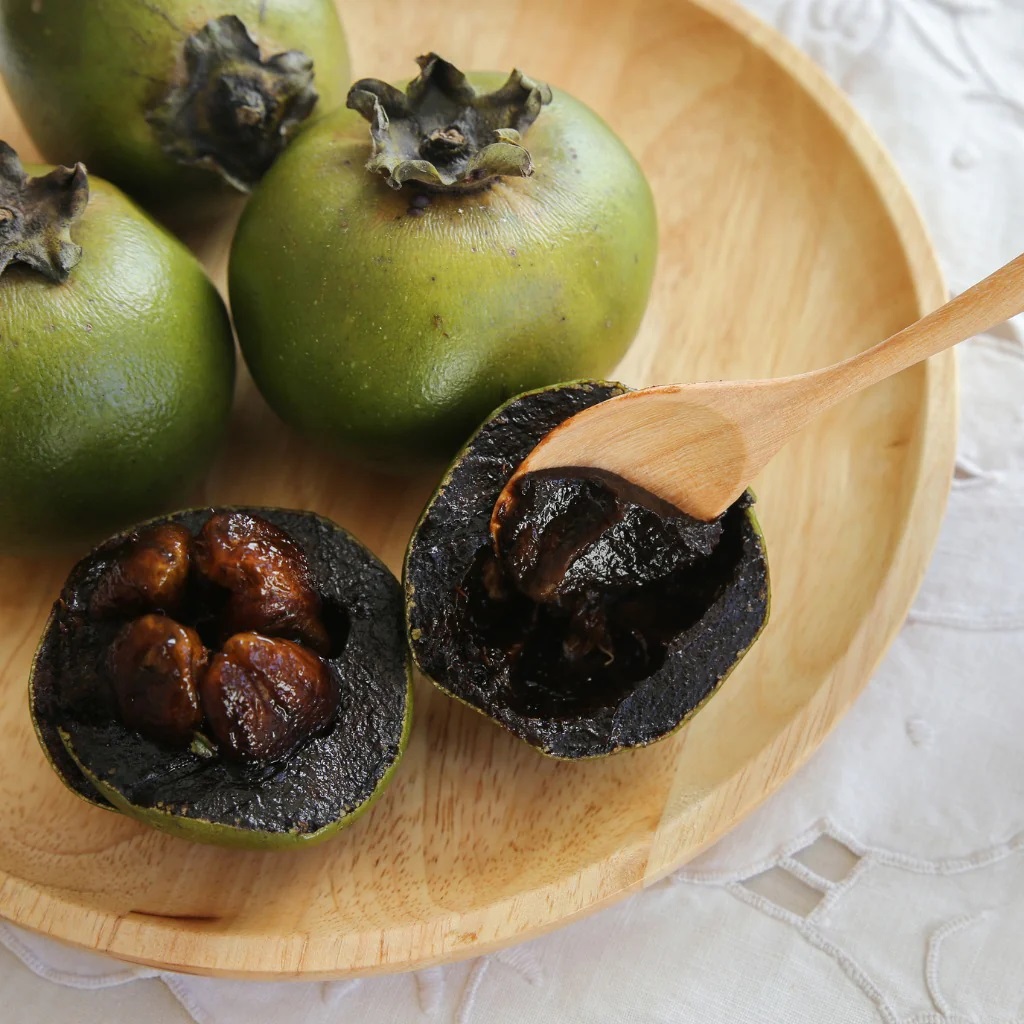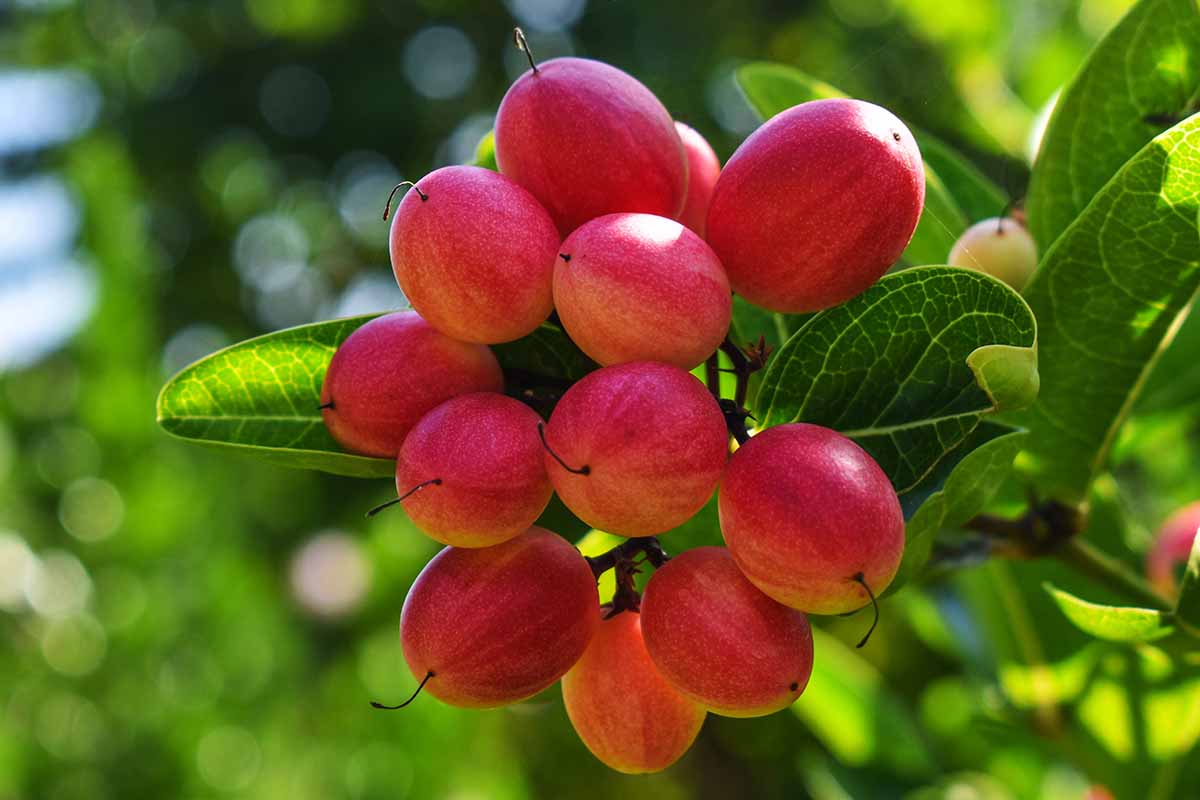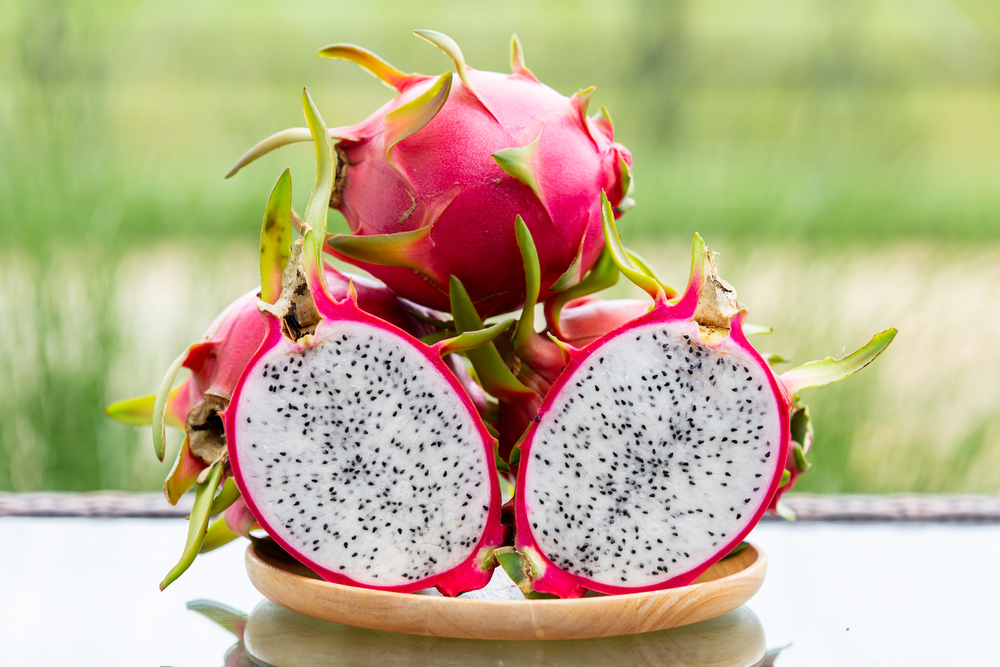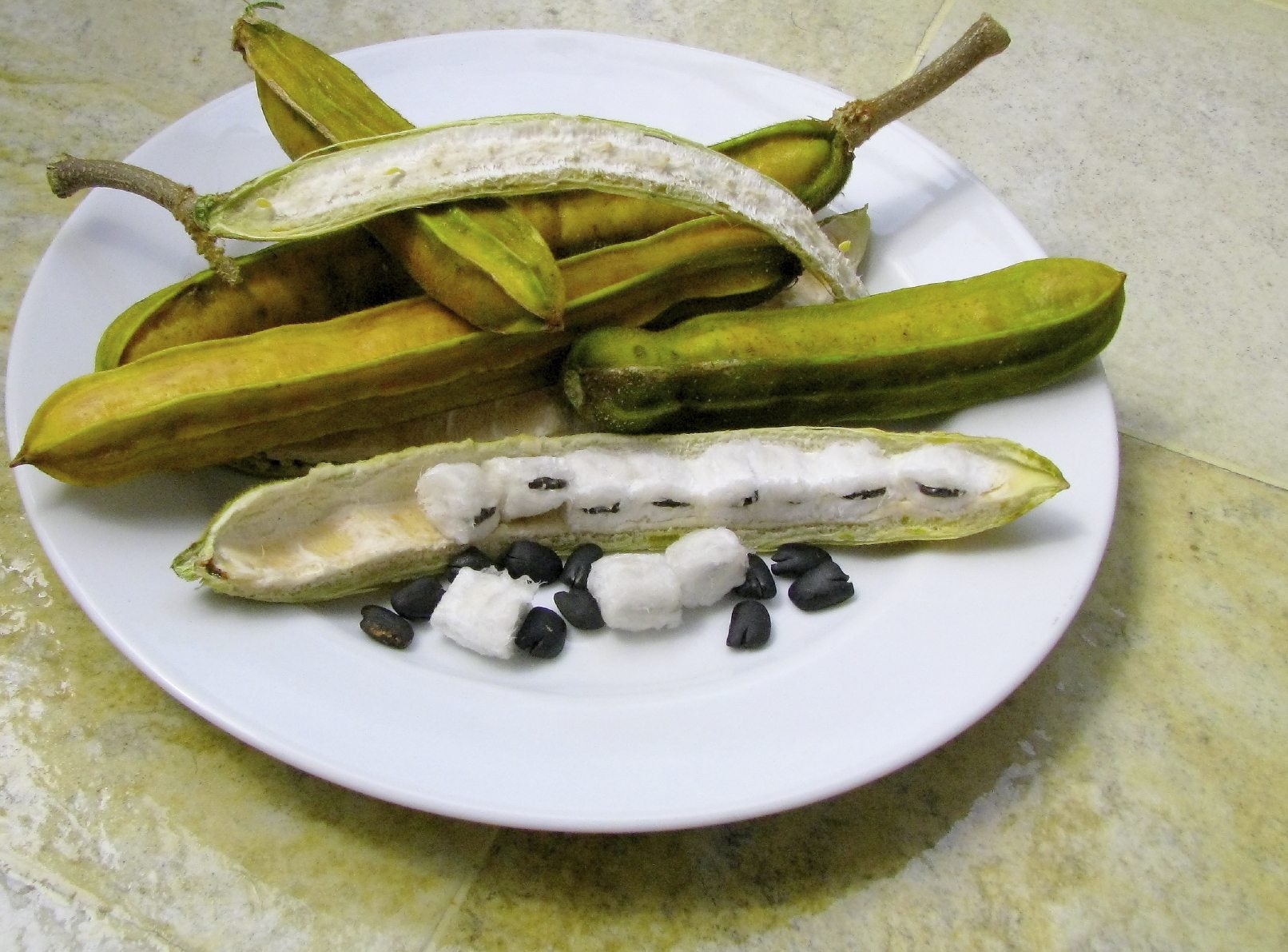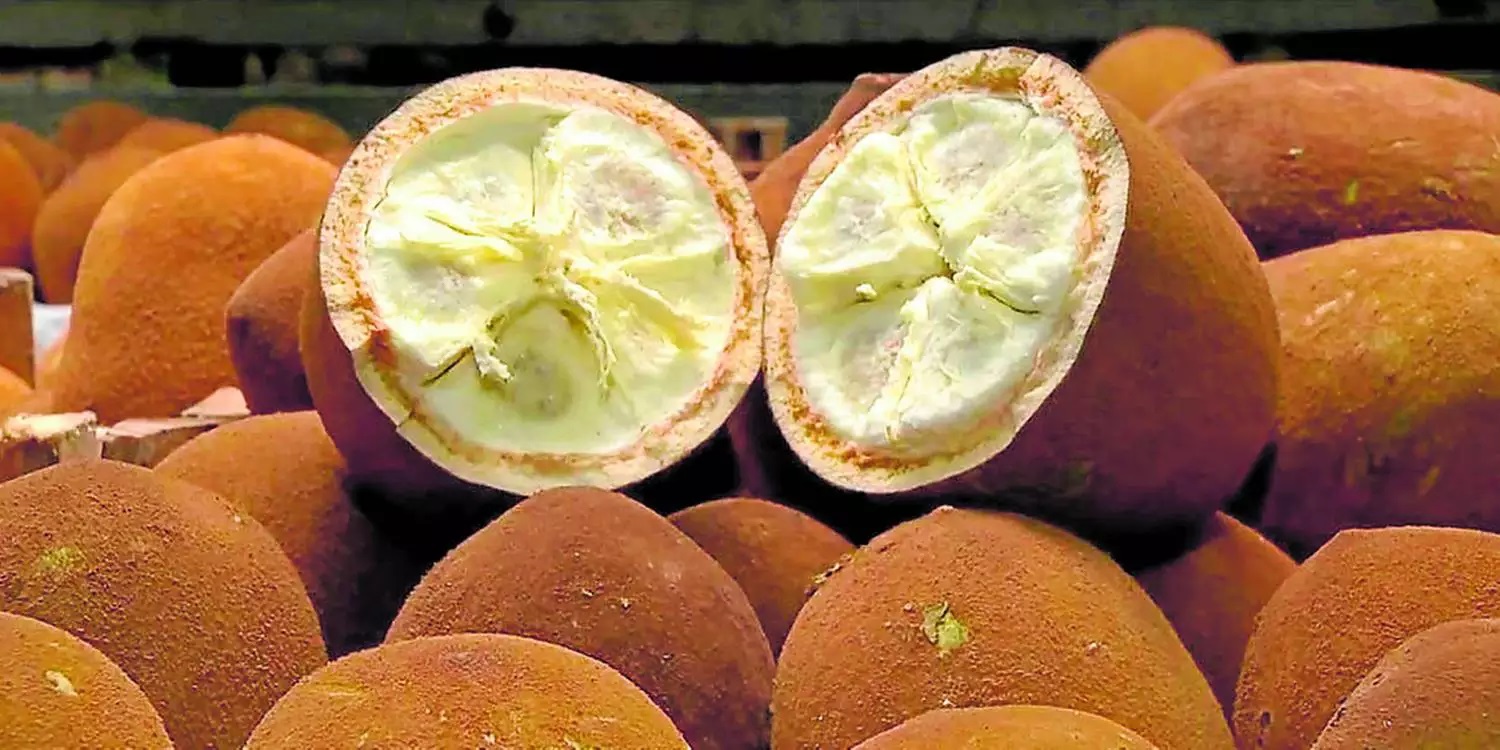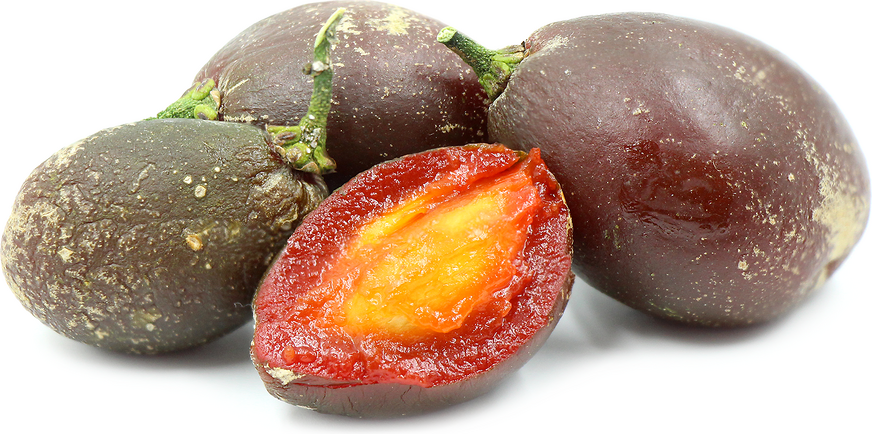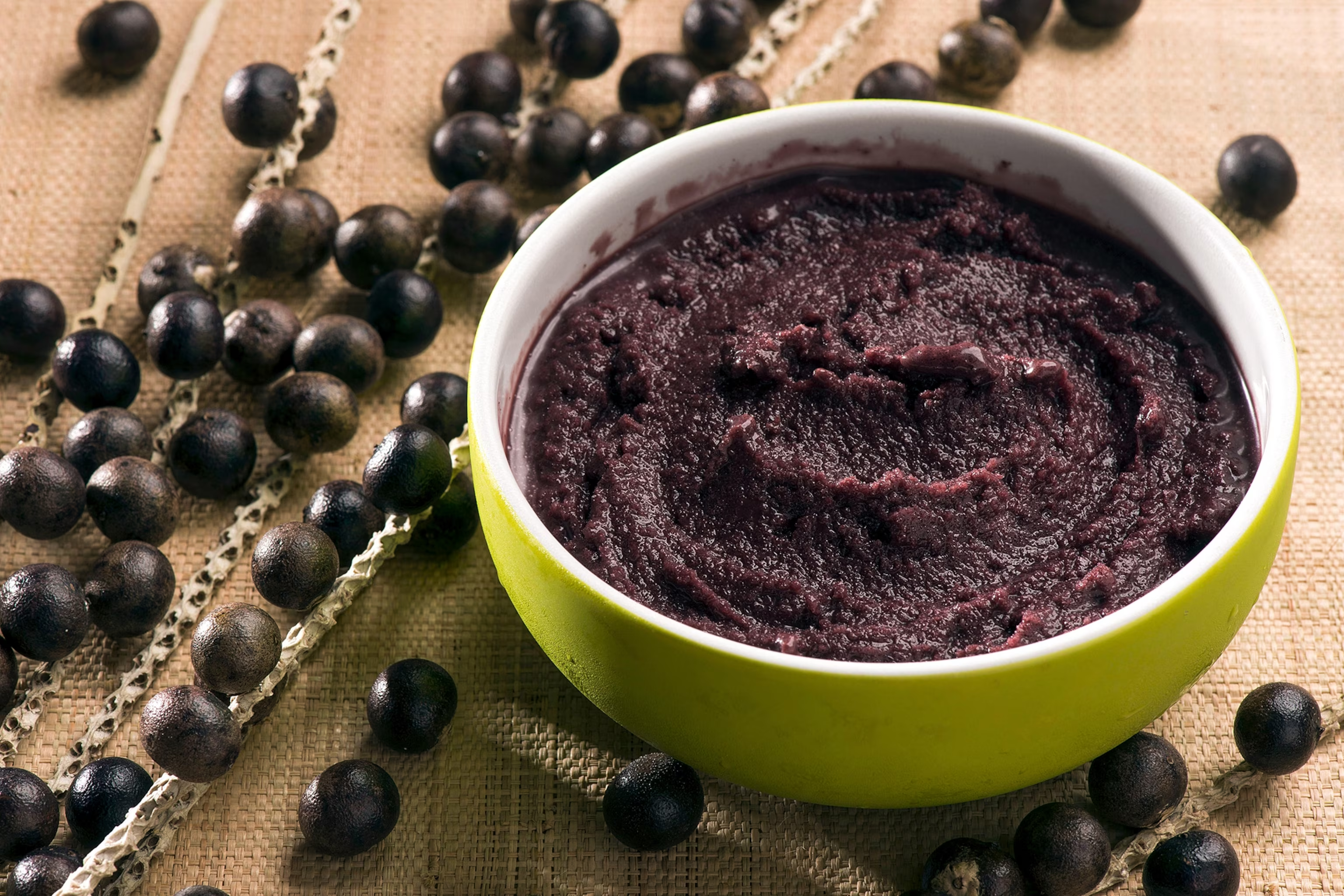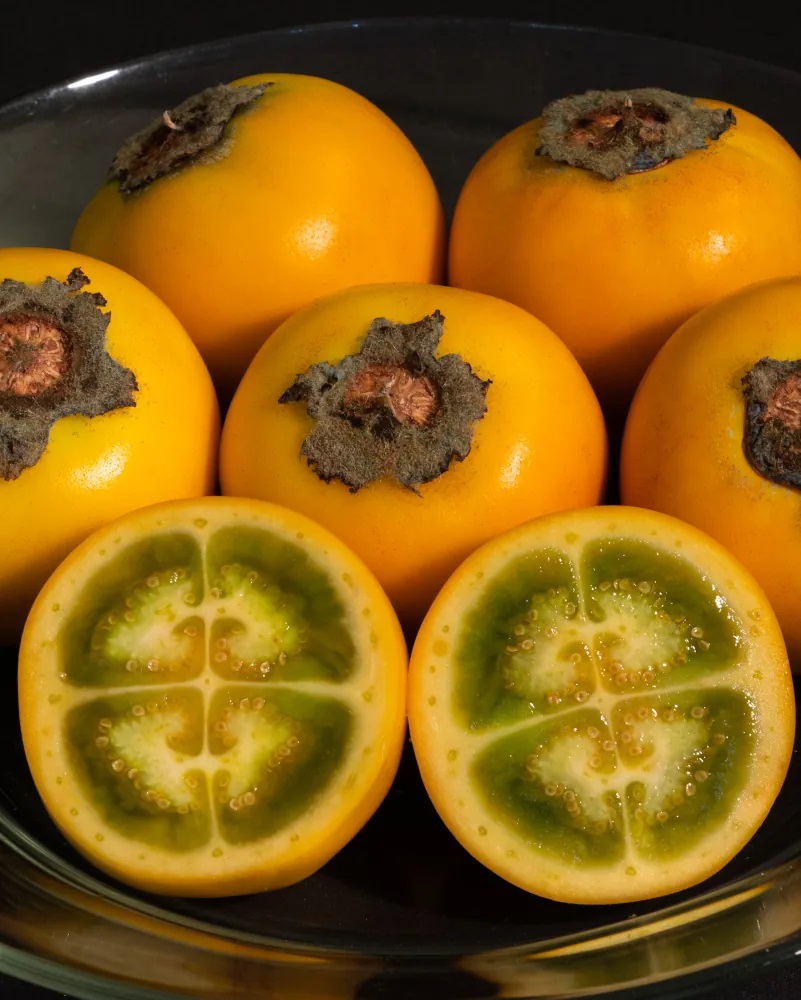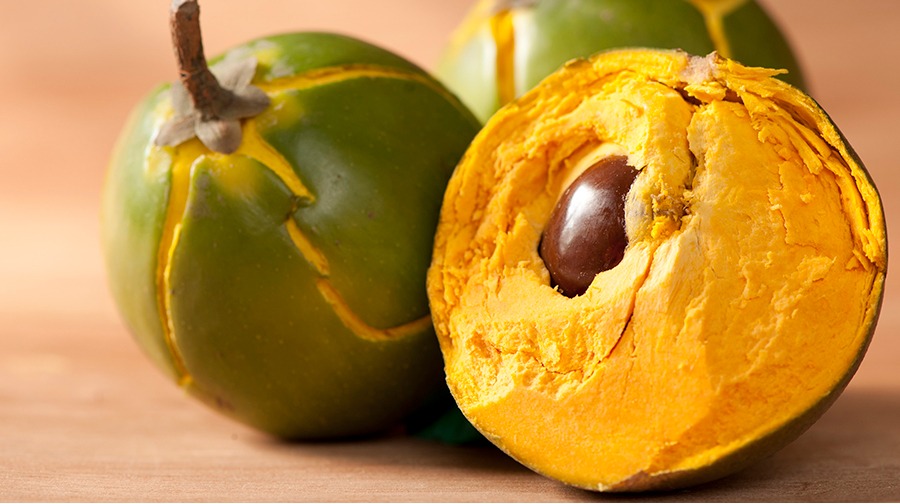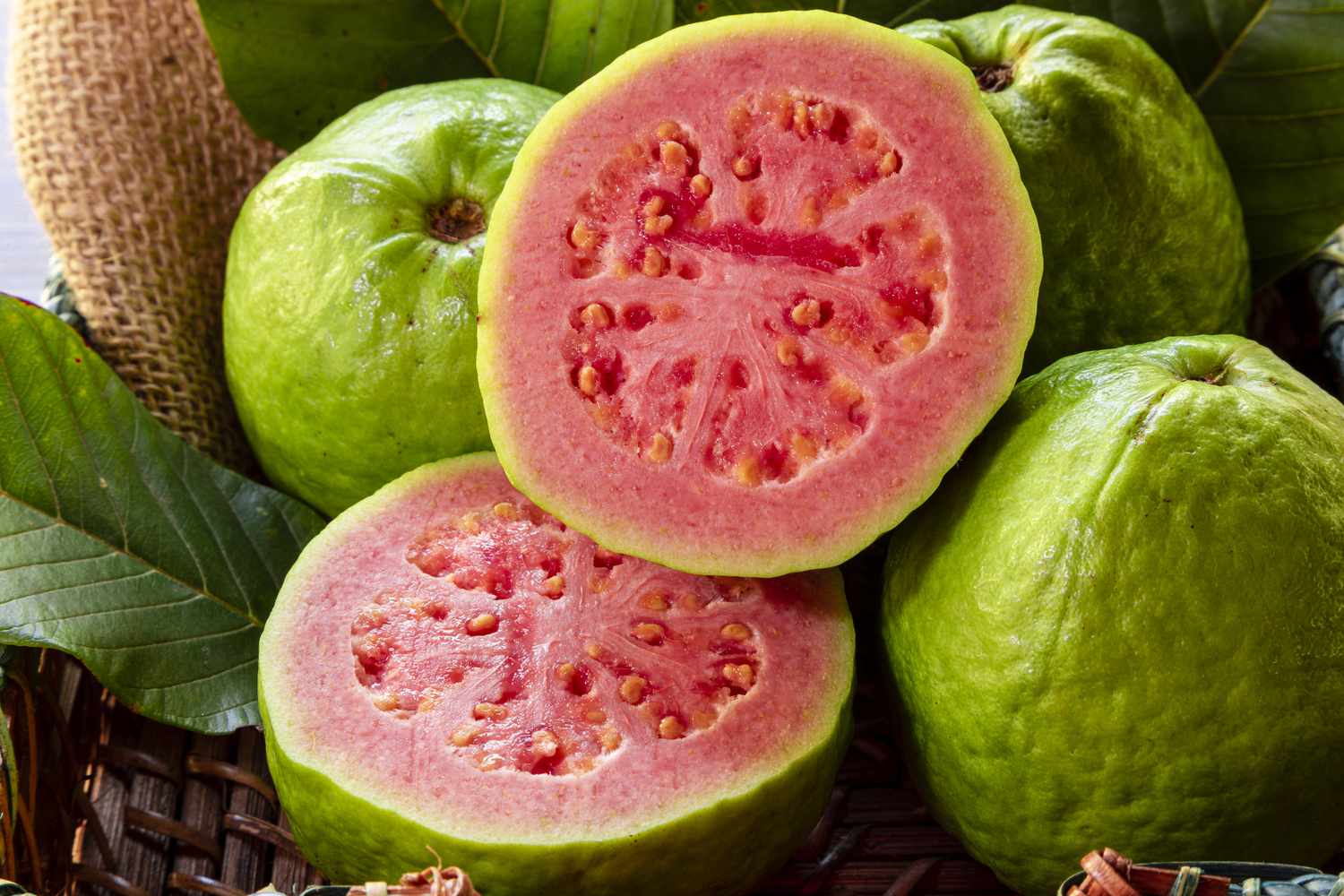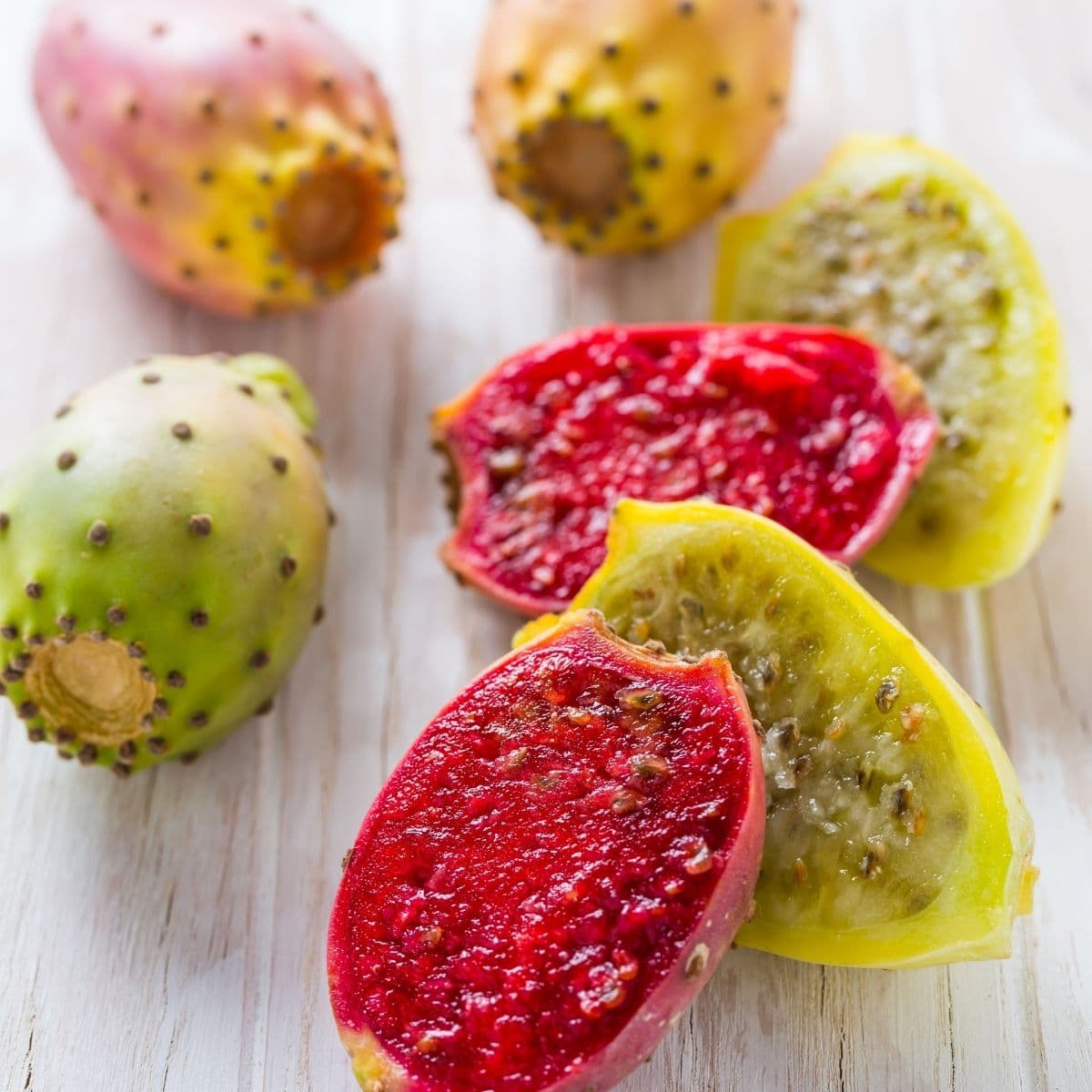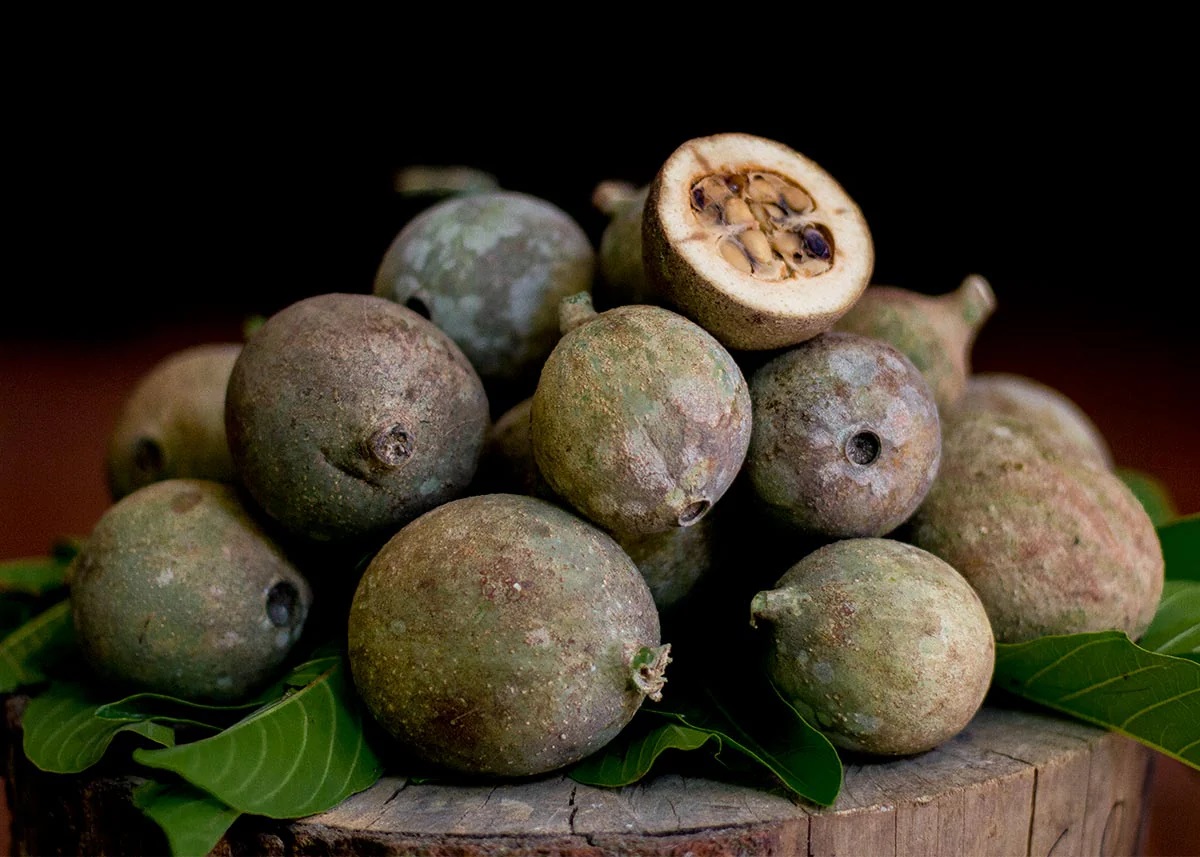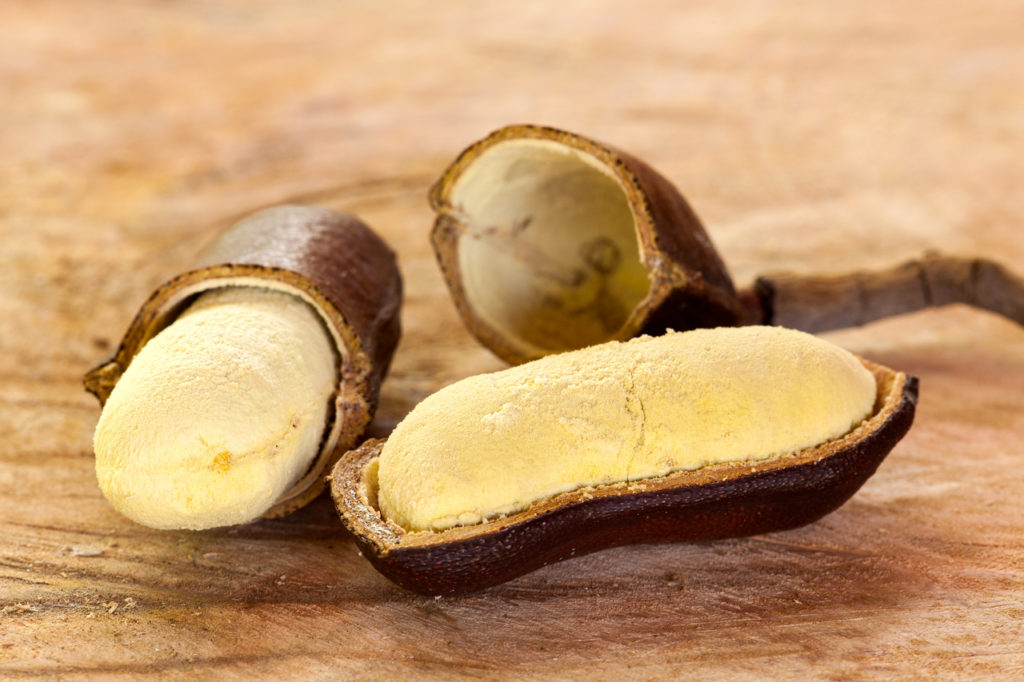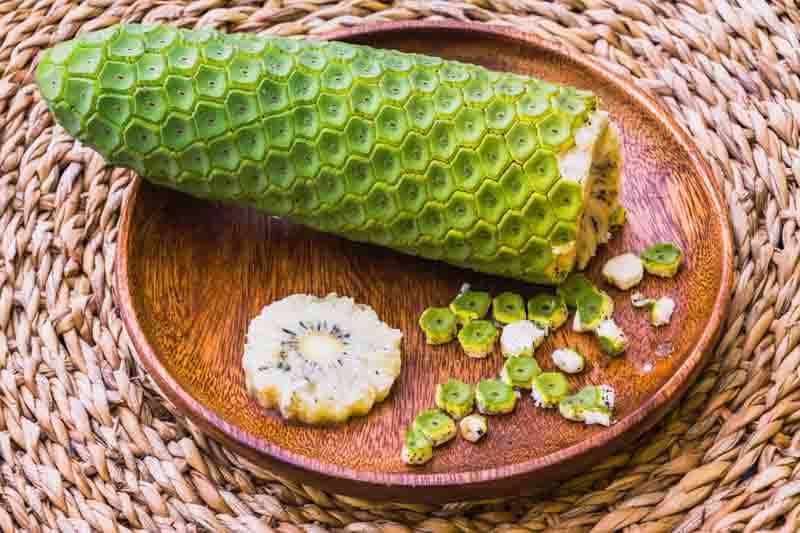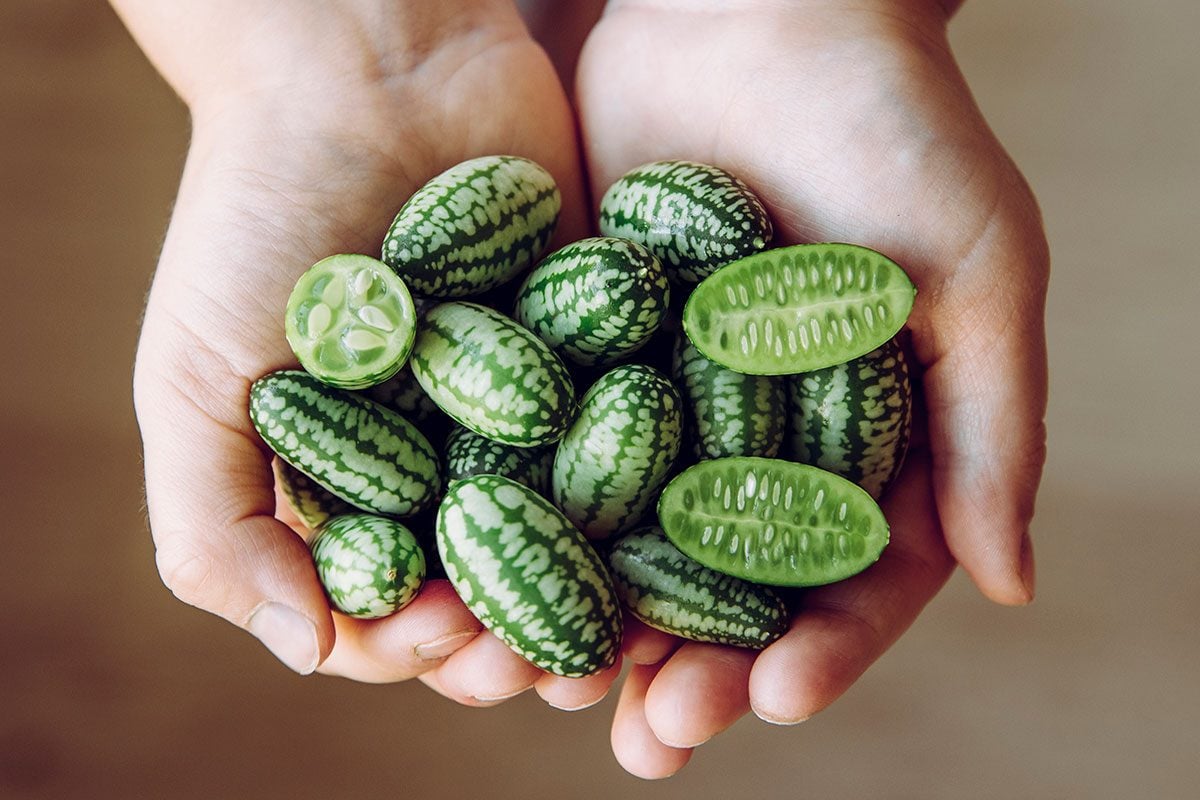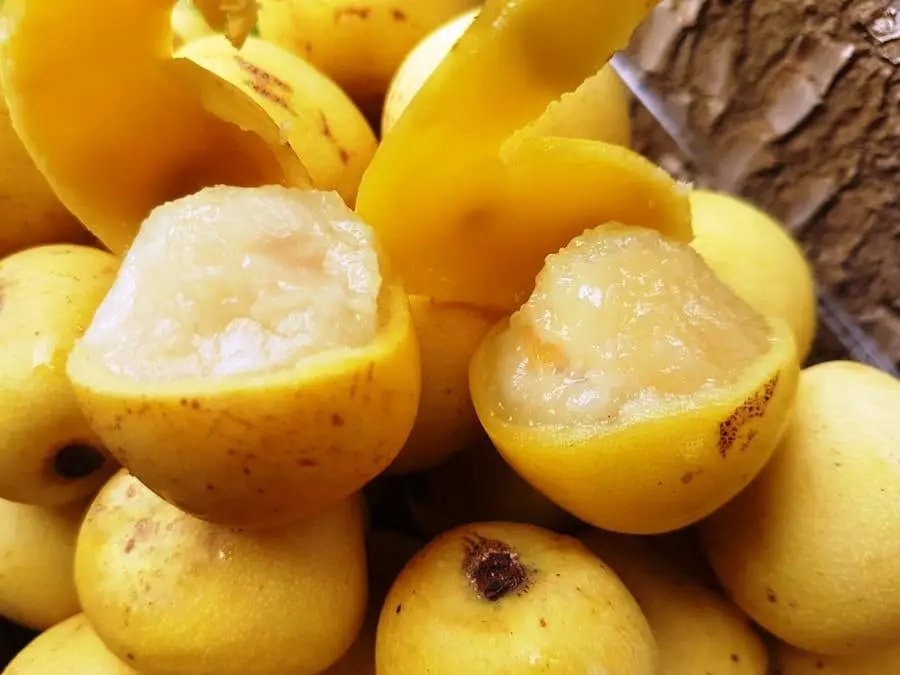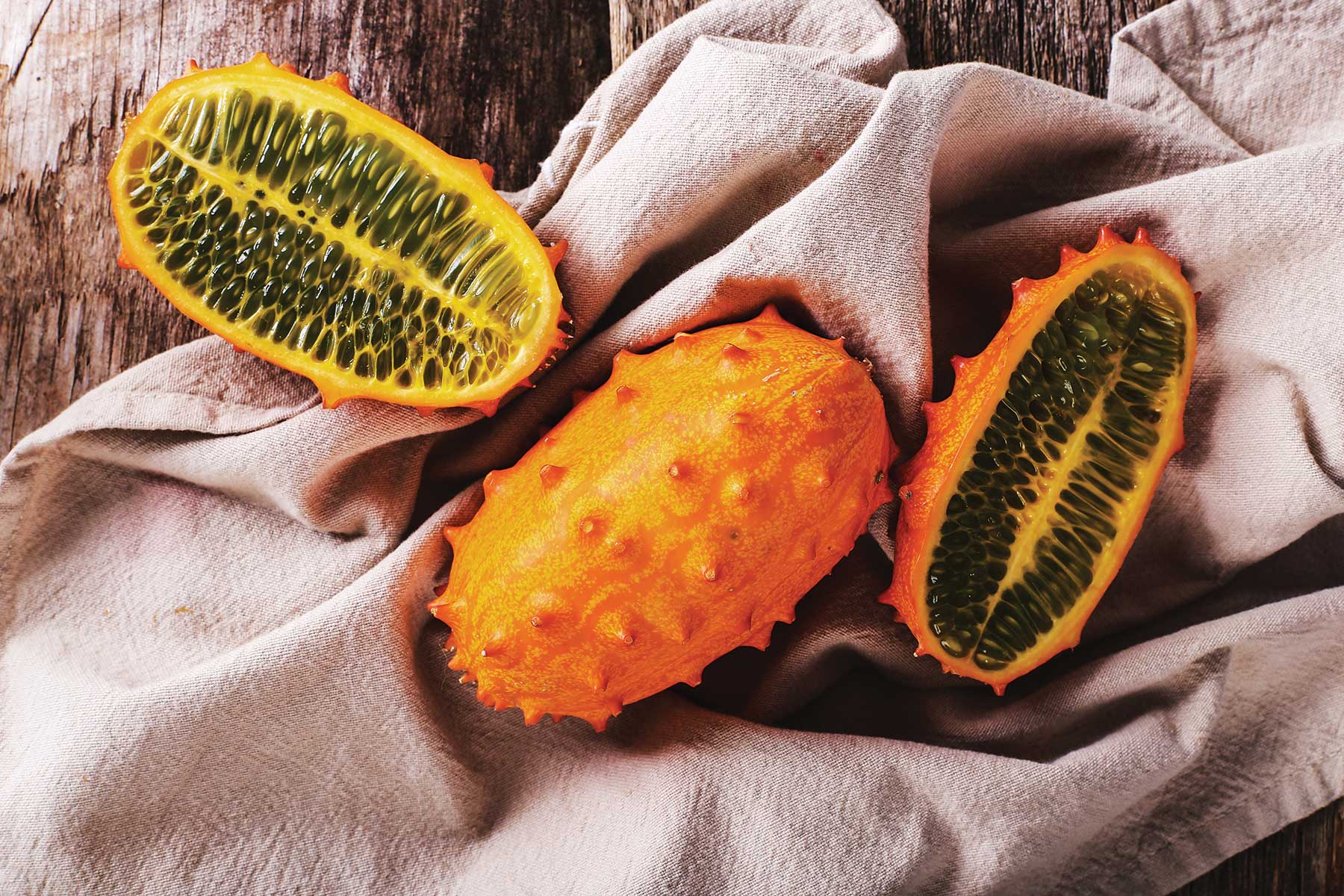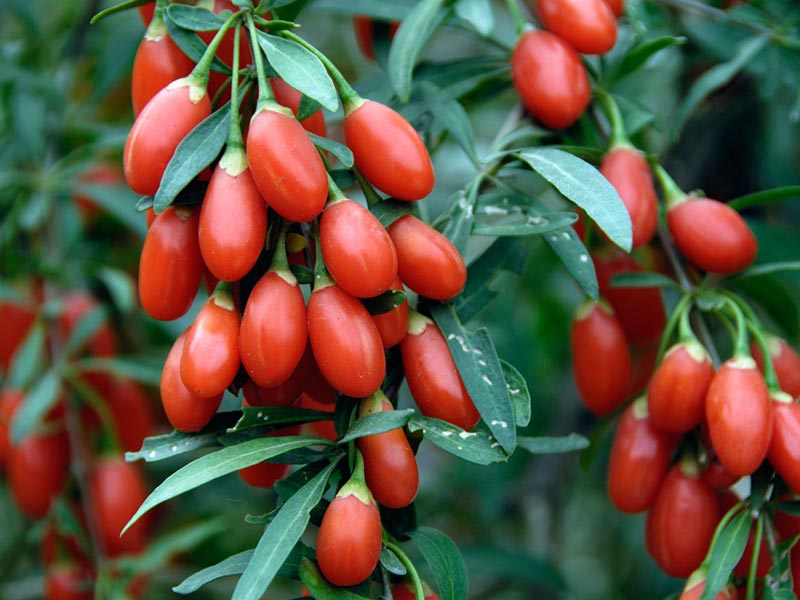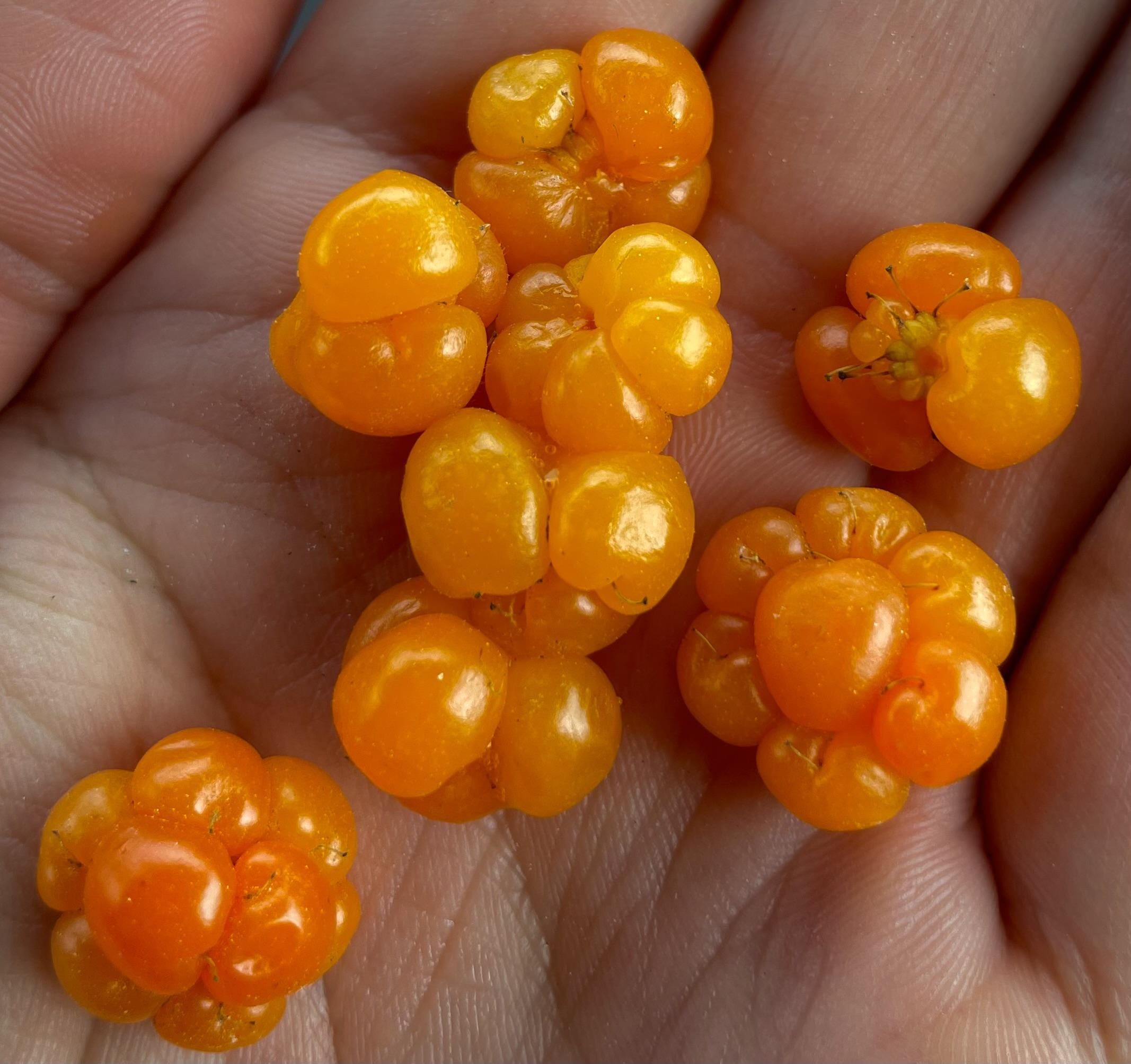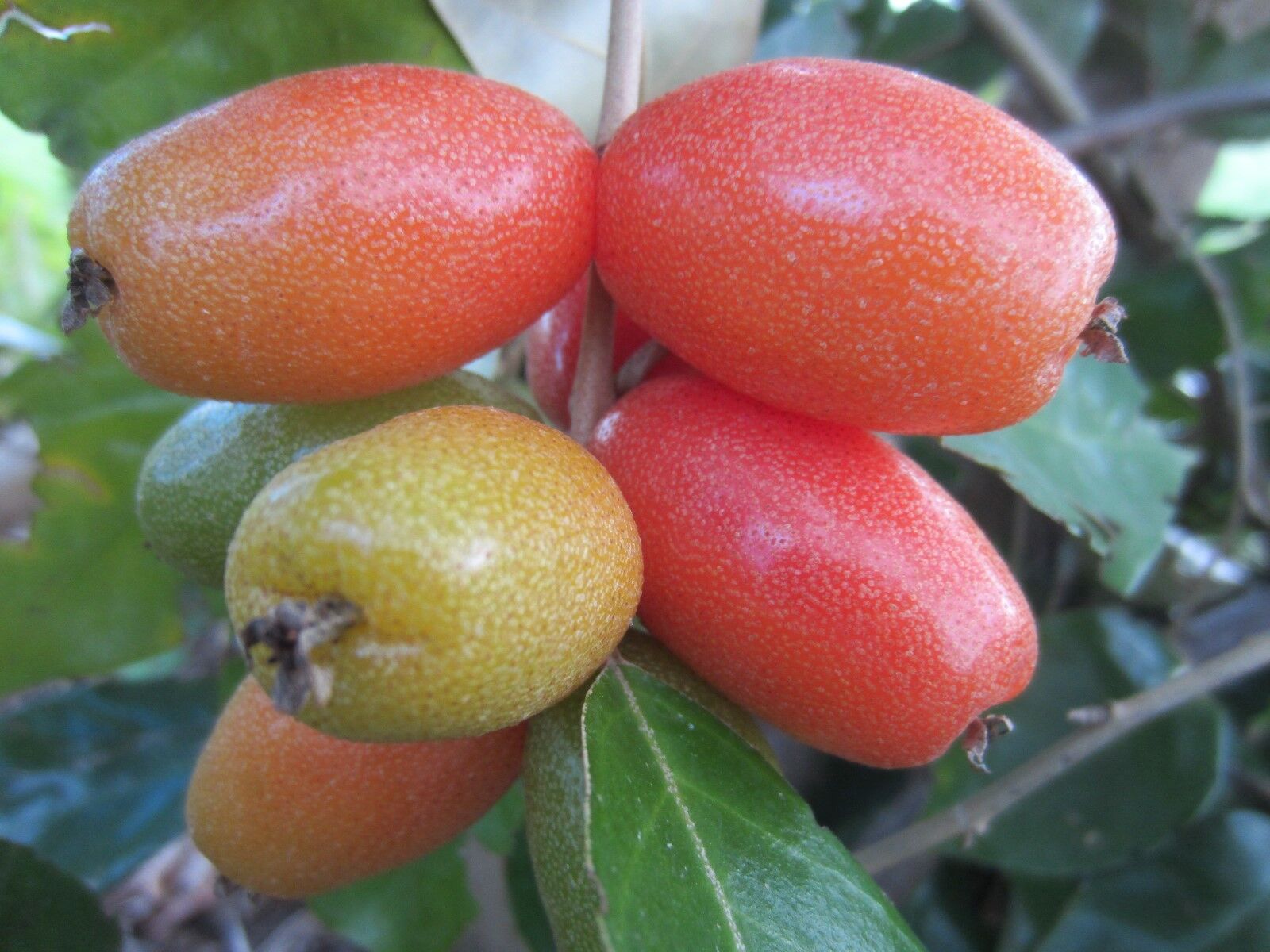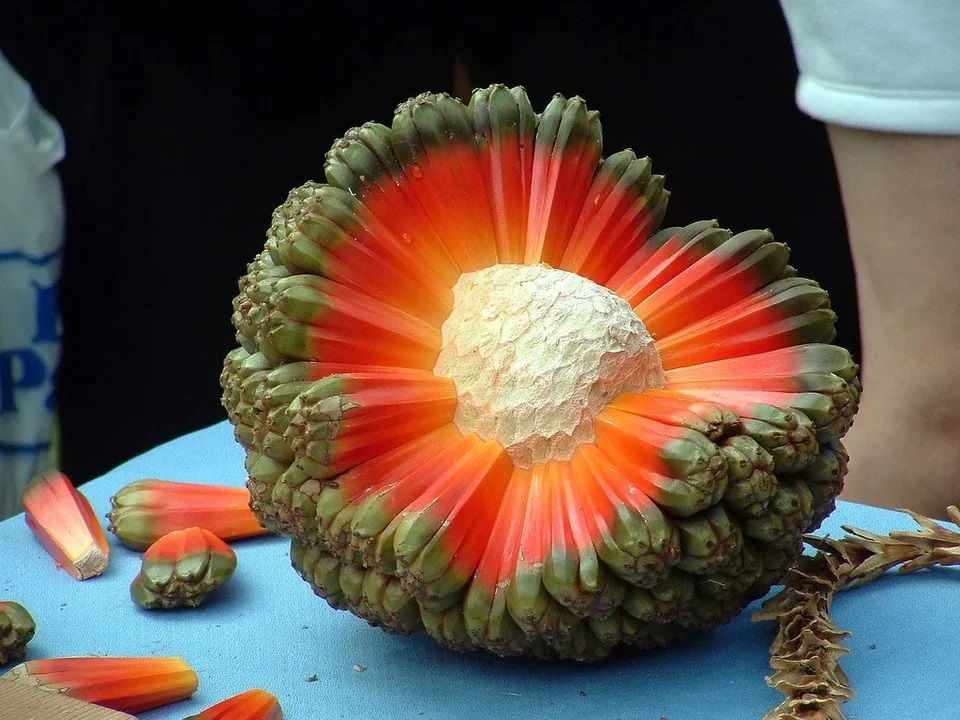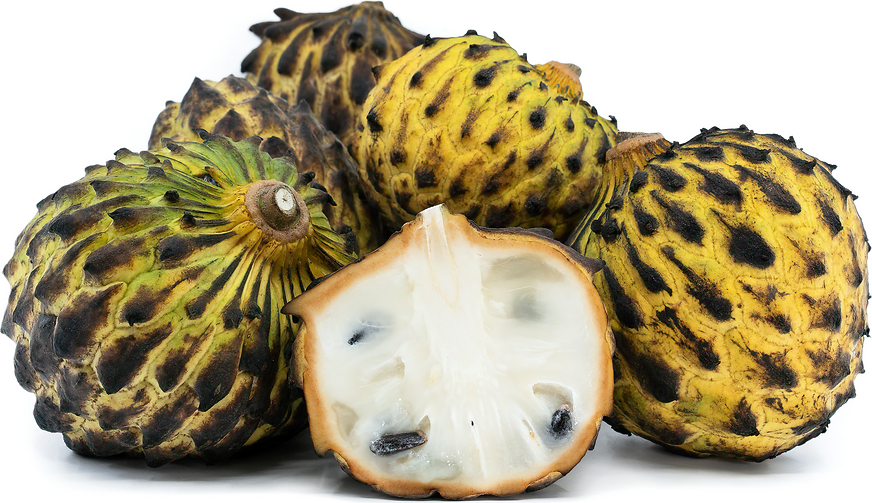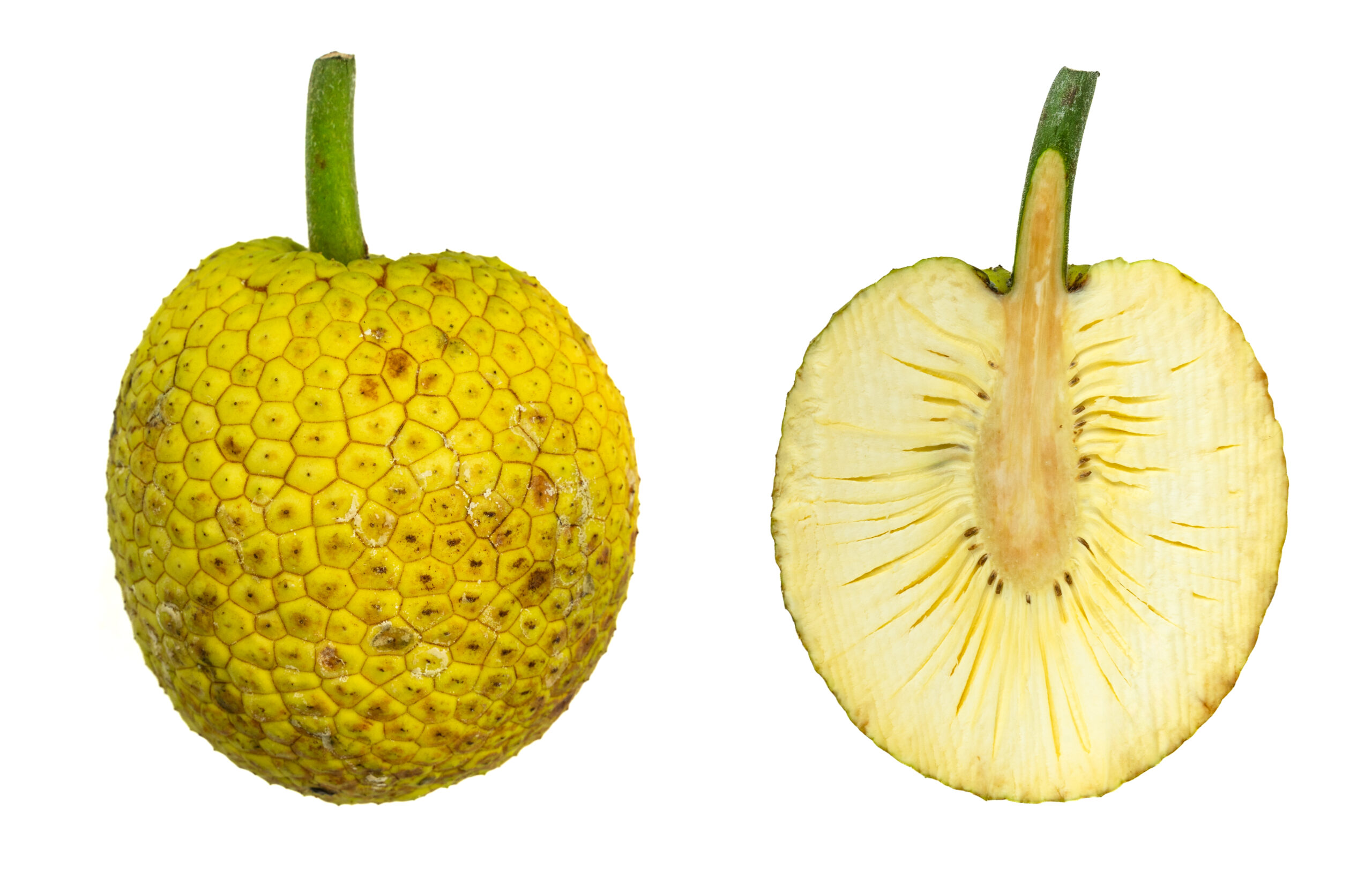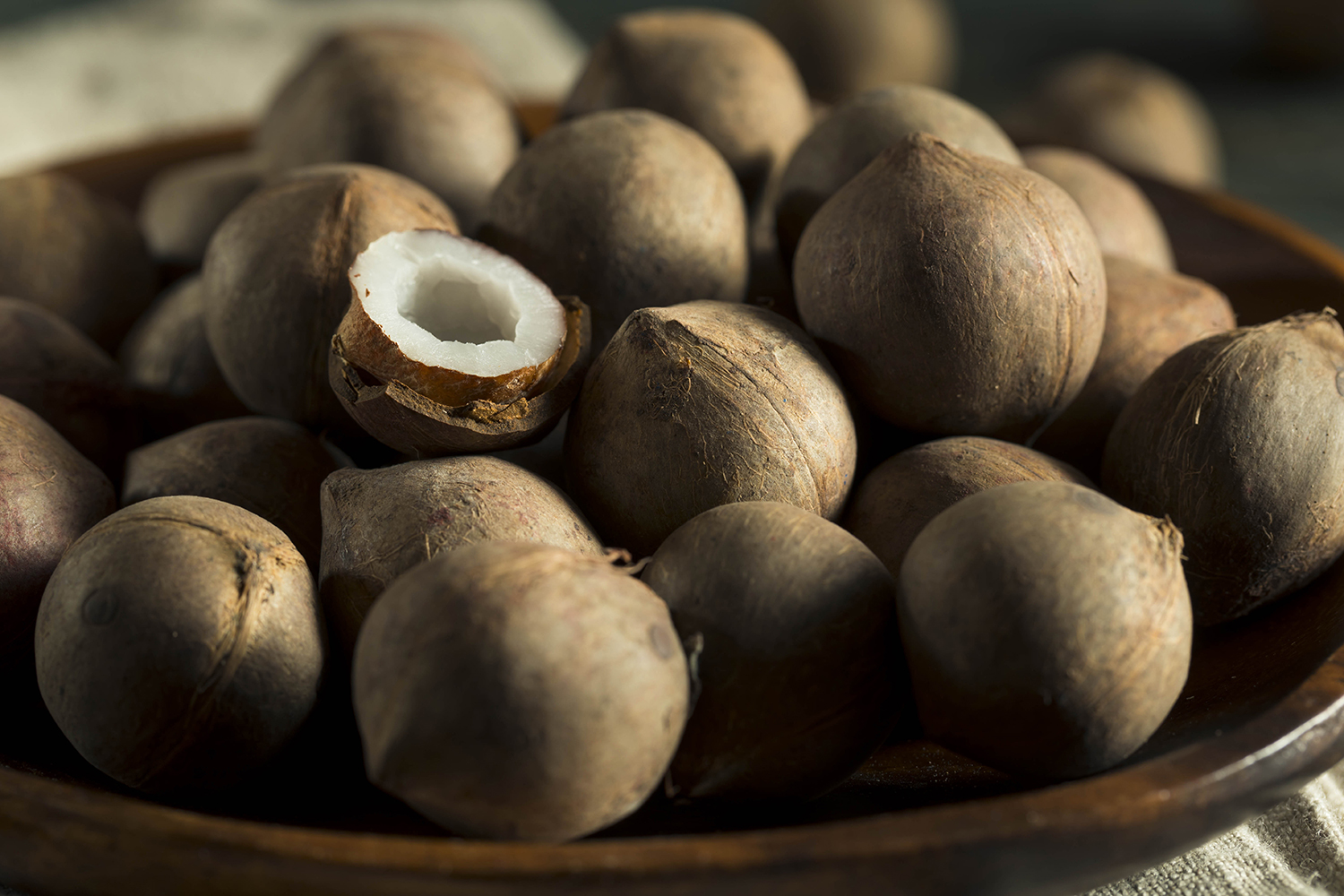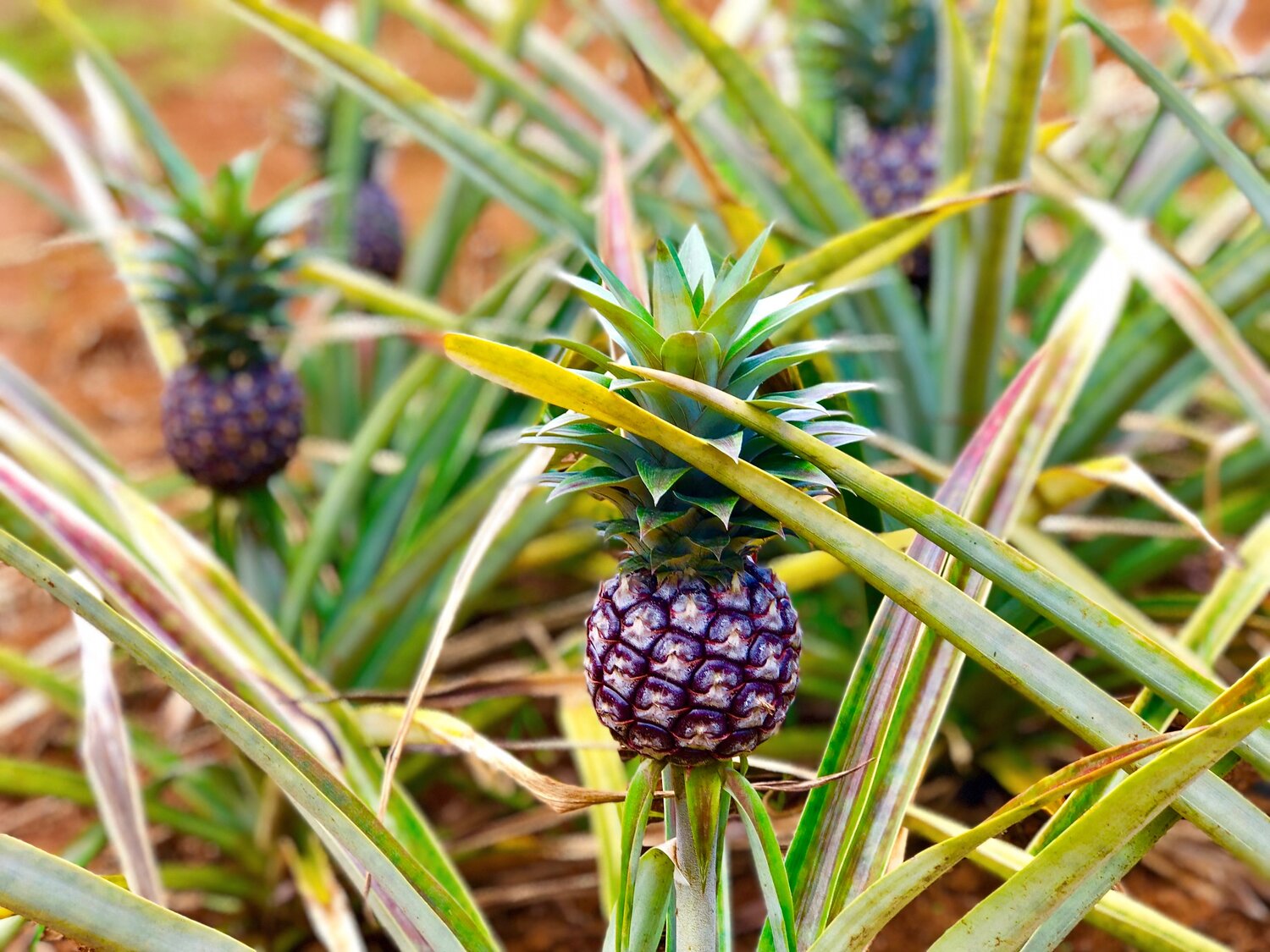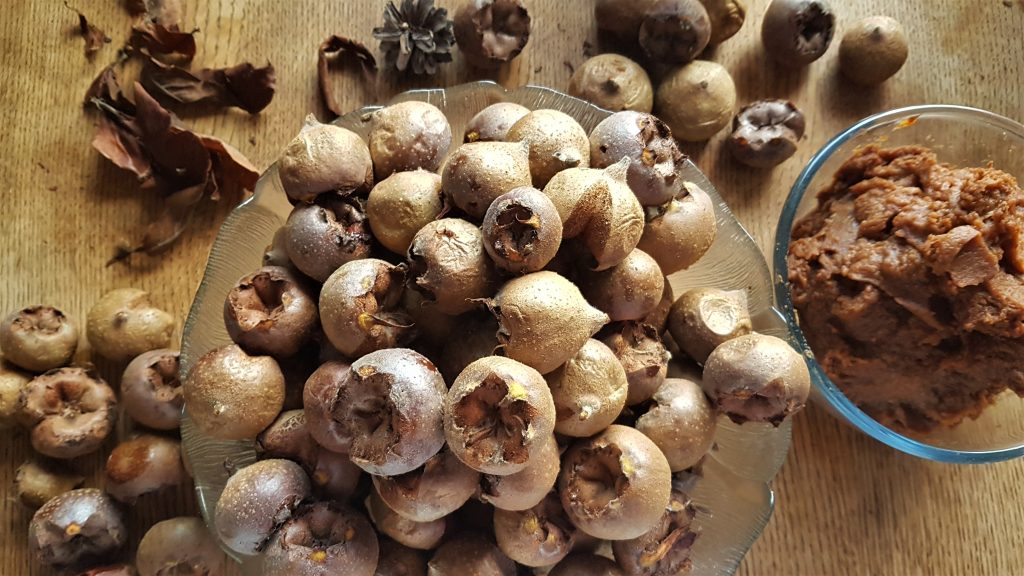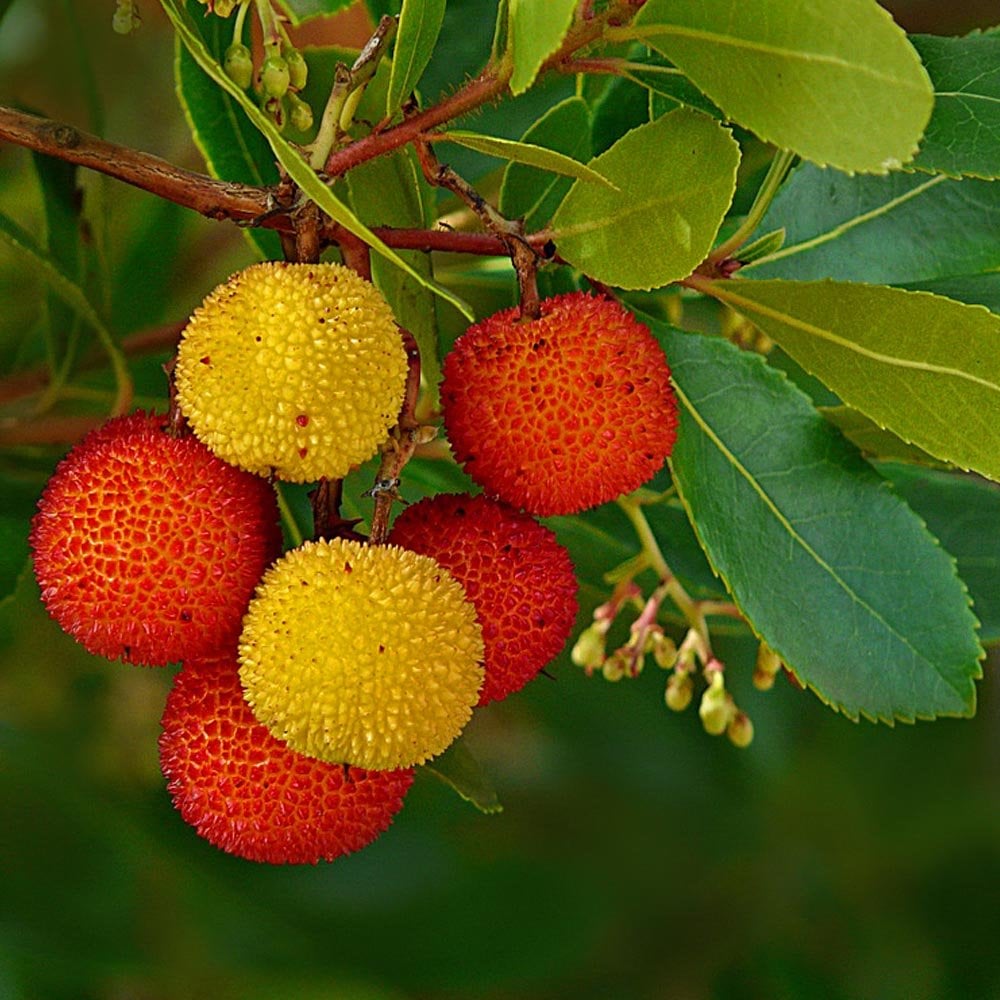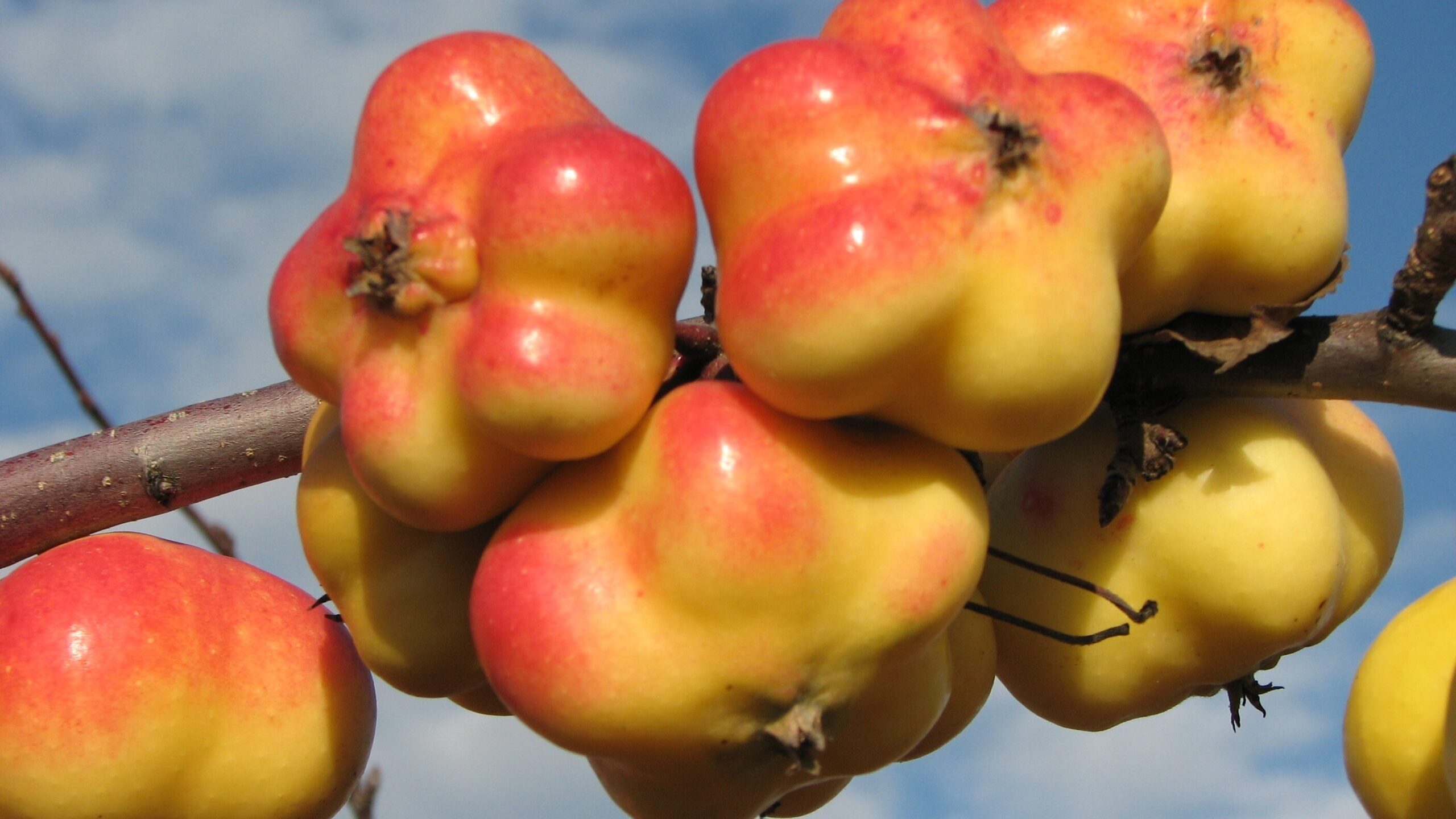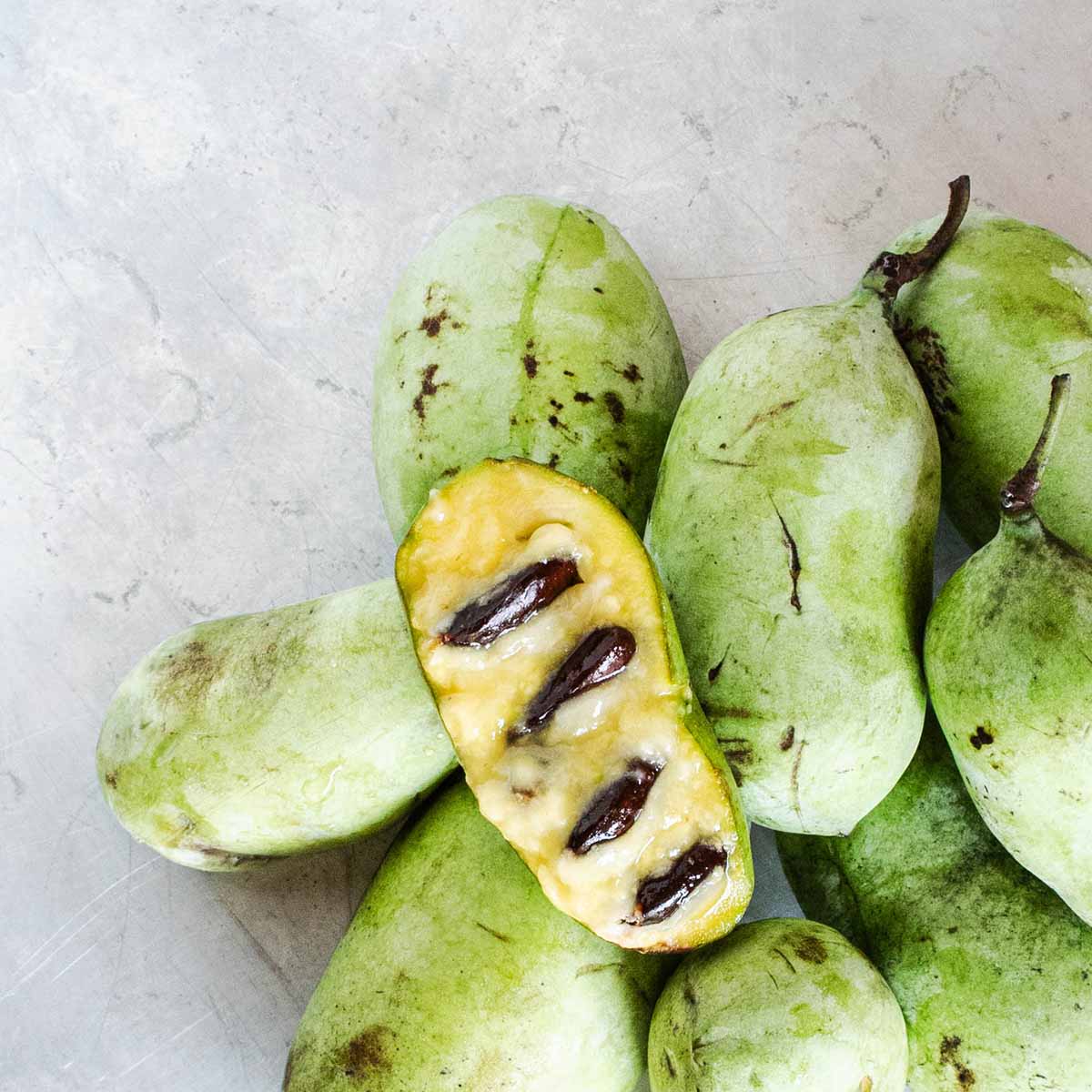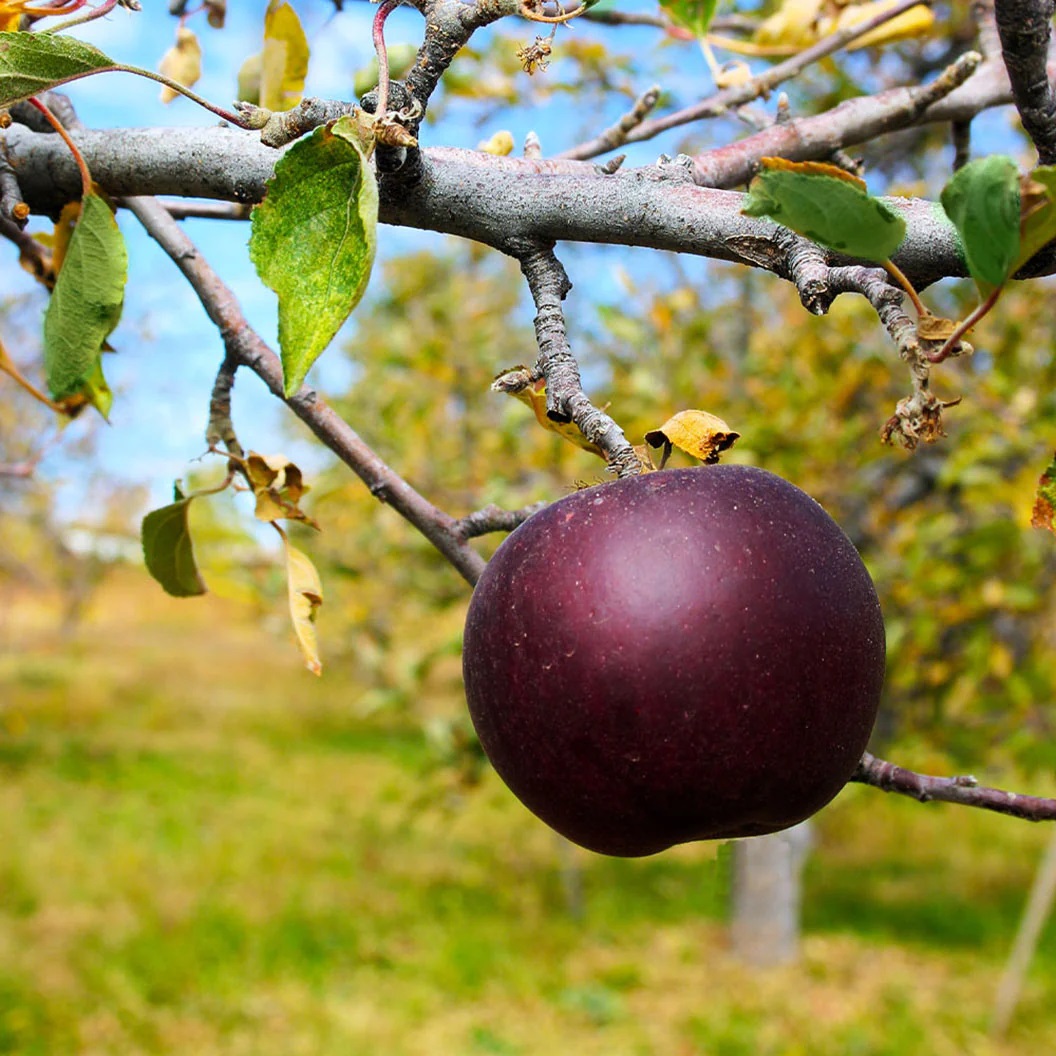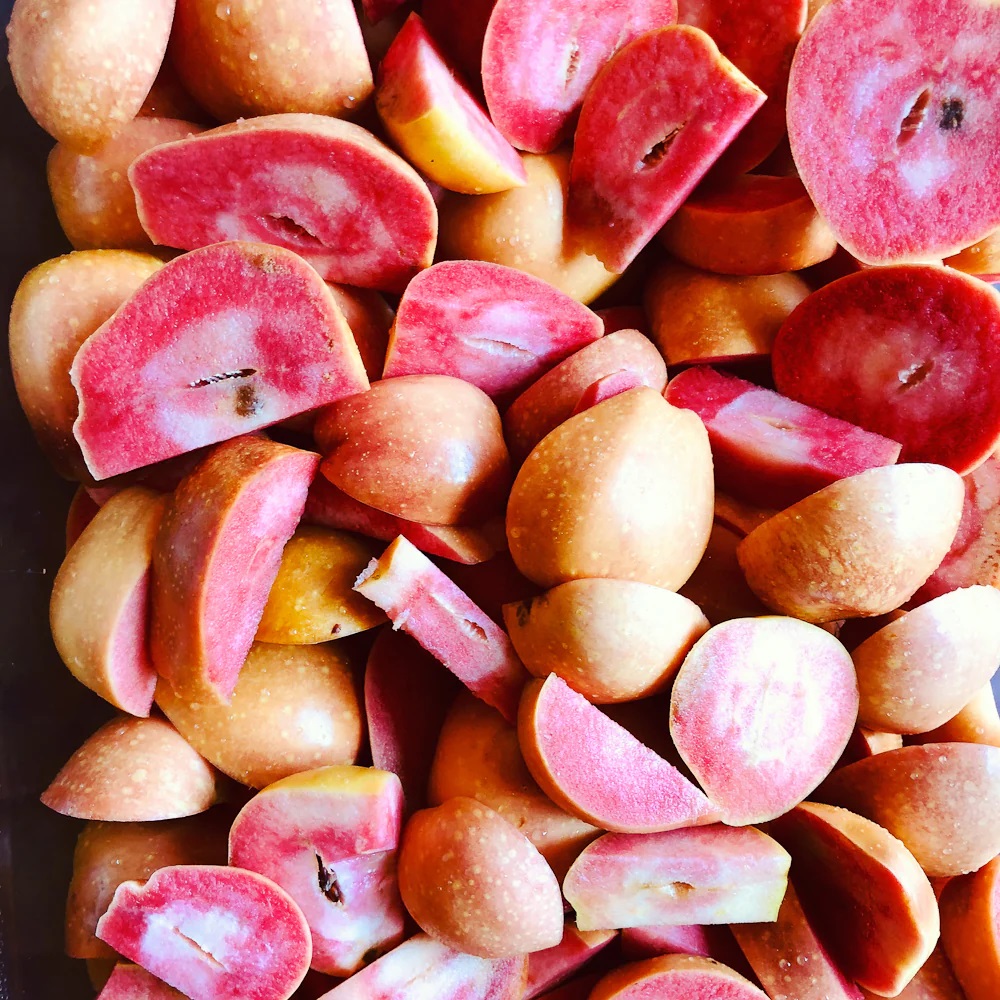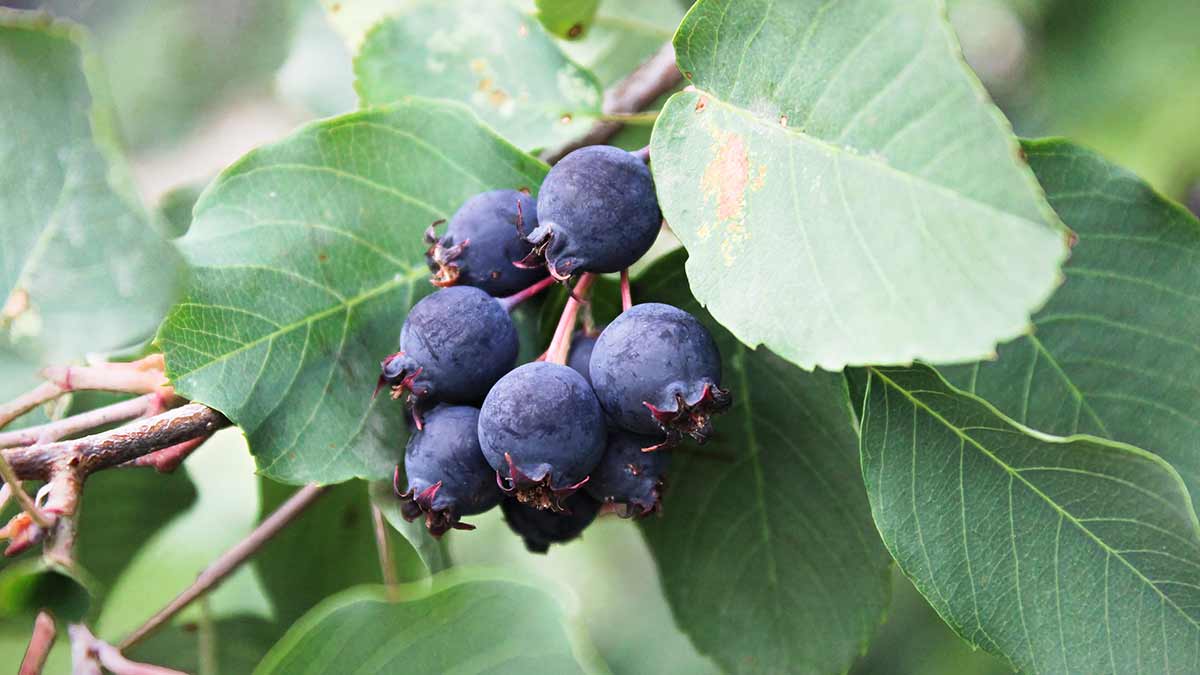50 Rarest Fruits In The World You’ve Never Heard Of [With Pics]
Rare fruits offer more than flavor-they’re a glimpse into nature’s wonders. Learn about the rarest fruits and their unique stories.
![50 Rarest Fruits In The World You’ve Never Heard Of [With Pics]](https://www.dailyhawker.com/wp-content/uploads/2025/03/148f7232752b6545/what-is-the-rarest-fruit-in-the-world.jpeg)
Dec 24, 2024
Rare fruits fascinate with their beauty and flavors. Found in unique ecosystems, they are true treasures of nature. Tropical forests and remote islands hide these wonders. They represent the incredible diversity of life on our planet.
Unlike common fruits like apples and bananas, rare fruits surprise with unusual flavors. Some contain chocolate-flavored pulp, tangy citrus bursts, or vibrant colors. Their tough skins often hide a world of unexpected flavors. Aside from their appeal, they tell cultural and historical stories.
Rare fruits play a key role in biodiversity. Protecting them helps fragile ecosystems thrive. Supporting sustainable farming ensures their survival for future generations. These fruits remind us of nature’s delicate balance with human activity.
Why Are Some Fruits So Rare?
Rare fruits face unique challenges. They grow in specific climates. Some depend on fragile ecosystems. Human actions also affect them.
Environmental And Geographic Factors
Rare fruits often need exact conditions. For example, Coco de Mer grows only in Seychelles. It thrives in tropical environments.
Fruits like Durian and Hala Fruit also rely on specific soils. These ecosystems make their cultivation elsewhere difficult.
Human Impact
Deforestation and urban growth threaten rare fruits. Snakefruitand Ackeelose habitats to agriculture. Overharvesting adds pressure.
Conservation efforts are crucial. They help protect these fruits for future generations. Awareness is key to preserving biodiversity.
Perishability And Cultivation Challenges
Transporting fruits like Mangosteenand Rambutanis hard. They spoil quickly. Others, like Miracle Fruit, need careful growing techniques.
Related: What Is The Oldest Known Fruit? Guide To Ancient Fruits
Most Expensive Rare Fruits
Some fruits are both rare and costly. Their scarcity and demand drive prices up. Here are ten expensive examples:
1. Coco De Mer
Coco de Mer is a natural treasure from the Seychelles. It produces the world's largest seeds, which can weigh up to 30 kilograms. The fruit's distinctive double-lobed shape resembles a human pelvis, which contributes to its mythical status.
Strict growth regulations protect its ecosystem, making it one of the world's rarest fruits. It contributes significantly to Seychelles' conservation efforts and cultural heritage. Collectors and nature enthusiasts value it more because of its scarcity and ecological significance.
2. Buddha’s Hand
Buddha's Hand is a citrus fruit with a distinctive hand-like shape. Its long fingers make it a visually appealing religious offering in Buddhist ceremonies. Unlike most citrus fruits, it contains no juice or pulp.
Instead, the aromatic rind is valued for its fragrance. The zest is used in marinades, desserts, and cocktails. Its oil is also an important ingredient in perfumes and potpourri. Buddha's Hand is both versatile and profoundly symbolic.
3. Ackee
Ackee is Jamaica's national fruit and a dietary staple. It has a creamy texture and a savory flavor that goes well with saltfish. When unripe, the fruit contains hypoglycin A, which makes it toxic.
Proper handling and preparation are required to enjoy it safely. This dual nature as a delicacy and hazard adds to its allure and value. Ackee is a symbol of Jamaican culture, known for its long history and distinct flavor.
4. Finger Lime
The little fruit known as finger lime, or "citrus caviar," is regional to Australia. There are tiny, pearl-like juice vesicles inside of it. These are a favorite in fine dining because they burst with tangy flavor when eaten.
Finger limes are used to garnish seafood, desserts, and cocktails. The fruit comes in a variety of colors, including green, pink, and yellow, which adds visual interest. Its texture, flavor, and versatility make it a culinary treasure.
5. Gấc
Vietnam's "lucky fruit," Gấc, is nutrient-dense and vibrant orange-red. It contains high levels of beta-carotene and lycopene, which promote eye and skin health. Traditionally, it is used in ceremonial dishes such as sticky rice to represent prosperity.
Beyond tradition, it is transformed into oils and supplements to reap health benefits. Gấc's rarity and cultural significance make it highly valued in Vietnam and around the world.
6. Redlove Apple
The Redlove Apple has vivid red flesh and a tart-sweet taste. Its crisp texture makes it ideal for fresh eating and cider production. Limited cultivation adds to its exclusivity and demand.
The apple’s striking appearance makes it a centerpiece in gourmet dishes. Loved by chefs and fruit enthusiasts, Redlove Apples are as beautiful as they are delicious.
Also Read: What Is The Easiest Fruit To Grow? 17 Beginner-Friendly Choices
Rare Fruits By Geographic Regions
Rare fruits grow in specific regions. These areas shape their rarity and importance. Let’s explore these by location:
Southeast Asia
Southeast Asia is home to vibrant and diverse fruits found nowhere else on earth.
7. Durian
Pungent but creamy, Durian is known as the "King of Fruits." Its spiked rind protects its custard-like flesh, which is a delicacy in many Southeast Asian countries. Durian trees require specific tropical conditions to thrive, adding to its rarity. Premium durians can fetch hundreds of dollars per fruit in markets across Asia.
8. Rambutan
Rambutan is a sweet, juicy fruit with a hairy red shell. Its translucent flesh is rich in vitamin C and antioxidants. It’s enjoyed fresh or in salads. Rambutan’s slightly tangy taste complements tropical desserts and fruit platters.
It’s also used in syrups and jams, adding natural sweetness. Popular at local markets, its vibrant appearance makes it a favorite among fruit lovers worldwide.
9. Mangosteen
The mangosteen is queen of fruits with sweet and sour taste. The fruit has a tough purple shell on the outside which envelops tender white divisions on the inside. The mature mangosteen fruit is highly nutritious and packed with antioxidants and is used in traditional remedy for ailments.
It is usually consumed raw or used in preparation of juice or incorporated in dessert. This fruit is quite tender, and it is famous for its incredible taste and rarity that makes it real exotic gem.
10. Starfruit
Starfruit, or Carambola, is named for its star-like shape when sliced. Its crisp texture blends citrus and apple flavors. It’s versatile in both sweet and savory dishes, from salads to garnishes.
Starfruit is a refreshing snack and common in home gardens across Southeast Asia. High in vitamin C and low in calories, it’s a healthy choice for any meal.
11. Jackfruit
Jackfruit is the world’s largest tree-borne fruit, often weighing up to 50 kilograms. Its ripe, golden flesh is sweet and tropical. Unripe jackfruit is used as a meat substitute in curries and vegan dishes, thanks to its fibrous texture.
Jackfruit seeds can be roasted or boiled for snacks. Packed with nutrients, it’s a versatile fruit for both sweet and savory recipes.
12. Snakefruit
Snakefruit or Salak from Indonesia have reddish-brown, scaly skin with crispy, sharp taste and sweet and rather acidic pulp. The sound it makes when eaten also makes it a prime snack in Southeast Asia today.
It is commonly consumed raw, or as a pickled vegetable, or used in preparing syrups due its taste which combines sweet and sour. Eaten whole, Snakefruit’s small, garlic-like lobes provide bursts of refreshing flavor, and are commonly enjoyed as a snack at markets.
13. Akebi
Akebi is an exotic fruit, which grows in Japan and some part of Southeast Asia. It has a more ghastly purple pod like skin and the pulp is sweet and has a jelly like consistency.
The outer skin of the bitter gourd, though bitter itself is usually stir fried or deep fried in Japanese food. Akebi is regarded as the seasonal vegetable and it is produced only in early autumn. It is much valued due to the rather different flavor and dichotomy of uses.
14. Pandanus
Pandanus, ‘Screw Pine’ fruit is usually juicy segments and it has fragrant leaves. The fruit’s sweet, tropical nectar is preferably chewed or used in preparation of foods and other recipes.
Pandanus flavour rice, sweets/ snacks, and beverages in Southeast Asia and its neighboring countriers. In baskets and mats they are also incorporated to make them have cultural values as well. This plant has many uses for several of native practices.
15. Loquat
Loquat most grows in subtropical and tropical regions of Southeast Asia and the Mediterranean region. ians has small, yellow-orange fruit with a tangy, sweet taste. Loquats contain vitamin A as well as fiber and they are the best snack to take.
They are taken fresh, in jams or as fillings for pies and tarts. Because of their crunchy texture they can be consumed fresh but are also often used in salads and other drinks.
16. Kuwini Mango
Kuwini Mango was identified to be a savory type that originated from Indonesia. As compared to the usual mangoes It has a sour and natural taste. It is employed in sambals, salads and chutneys and brings a vivid note to foods. The aroma of the fruit also increases is attractiveness and it is also eaten fresh by people who appreciate its taste profile.
17. Bambangan
Bambangan is an acidic small fruit originated from Borneo. A tough outer layer shields it from the sharp cooking medium; its sour and stringy meat may be incorporated into a sambal or eaten alongside rice.
Especially, due to its marked pungent smell and hot, sharp taste, it occupies a place of honor in the preparation of dishes for the inhabitants of certain geographical regions . Due to its uniqueness, Bambangan forms an extension to ordinary food making it a much-needed ingredient in the food industry.
18. Passion Fruit
Passion Fruit is fascinating fruit with small round shape and golden yellow skin containing an aromatic pulp with seeds. The pulp, golden or purple in colour, is tart-sweet. And it is applied to juices, desserts, sauces, and cocktails.
Frequently used in tropical countries, its natural rich colour and nutritional values make it a favourite among the conscious consumer.
Central And South America
This region offers tropical fruits with vibrant flavors and unique uses.
19. Black Sapote
Known as the "Chocolate Pudding Fruit," Black Sapote has creamy, dark brown pulp that tastes like sweet chocolate. It is native to Central and South America and is often used in desserts or eaten fresh as a healthy alternative to chocolate.
20. Miracle Fruit
This small red berry alters taste perception, making sour foods taste sweet. It is popular in culinary experiments and tasting parties. Miracle Fruit grows in tropical forests and is valued for its unique effect caused by the protein miraculin.
21. Dragon Fruit
Also called "Pitaya," Dragon Fruit has bright pink skin with green spikes and white or red pulp filled with crunchy seeds. It is mildly sweet, with a texture similar to kiwi. This fruit is a favorite in smoothies and fruit bowls across Central and South America.
22. Ice Cream Bean
This long, green pod contains a sweet, cotton-candy-like pulp that tastes like vanilla. Found in tropical forests, it is a favorite among children and is often eaten fresh. The seeds are also roasted and consumed as a snack in some regions.
23. Cupuaçu
A cousin of cacao, Cupuaçu has a tangy, creamy pulp often used in juices, desserts, and sweets. It is native to the Amazon rainforestand celebrated for its rich flavor profile. The seeds are also used to make a chocolate-like product.
24. Peanut Butter Fruit
Peanut Butter Fruit that originated from South America is tiny, orange and, potentially, quite tasty. South of that it resembles a peanut butter pulp, with a thick, chewy, nutty taste. They are eaten fresh, and the juice can be used to make smoothies other recipes such as desserts and milkshakes.
Because of the qualities in the fruit, it is normally appreciated by those with exquisite tastes in their foods and fruits. It is a very healthy fruit owing to the nutrient rich peanut butter that you can add to the fruit which makes the fruit taste like a dessert.
25. Acai
These small dark purple berries or sometimes referred to as palm berries are certified as super foods across the globe. They are indigenous to the Amazon basin and are part of staple diet of people in Brazil and the neighboring countries. Acai is very colorful, tasty berry, which is packed with antioxidants, dietary fiber, and good fats – all of which can be good news for your energy.
The following berries are usually incorporated in smoothie bowls with an addition of granola, fresh fruits, and nuts. The pulp is also incorporated in juices, dessert, and energy bars and has been popularized for its health enhancing properties internationally.
26. Naranjilla
Lulo, familiarly known as Naranjilla, is a oval-shaped fruit orange in color, enjoying popularity for the tangy, fresh orange juice it contains. Its taste is pineapple-lime and highly suitable for including in beverages and liquors.
In South America, especially in Colombia and Ecuador, Naranjilla is used in preparation of juice and desserts much in the same way that lemons are used to add flavor and appetizing color to our meals.
Due to the stimulating colour and the multiple ways it can be used, the fruit is widely used in local recipes and eaten fresh in warm weather.
27. Lúcuma
Lúcuma, otherwise known as the “gold of the Incas,” is a Peruvian fruit, which taste resembles the flavor of caramelised butter. The golden yellow fleshed fruit is mostly utilized in sweet dishes, in making ice cream, and in smoothies.
In addition to being a glucomannan, Lúcuma is also a natural sweetener that is comparable to sugar but contains low glycemic levels.
This efficient fruit contains antioxidants, vitamins, and fiber and is sweet in taste and healthy for the body as well. It stands out not only for its taste but for its functionality and for the reason that it is used in almost all Peruvian and other countries’ meals.
28. Guava
Guava is a sweet, fragrant fruit that is consumed all around the world. It pinks or can be white, its flesh is sweet but has the hint of an acidic taste. Guava is packed with vitamin C, antioxidants, and dietary fiber and it is even delicious to eat.
People consume the fruit fresh, use it in fruit bowls, or process it into jams, jellies or drinks. Guava juice is very much relished in tropical countries as it provides both taste and nutrition.
29. Prickly Pear
Prickly Pear or better known as Cactus Fruit is sourced from prickly pear cactus. They have a brightly-coloured tough rind enclosing an pink and white juicy pulpy fruit with a watermelon in taste and scattered seeds. These include syrups, jams, jellies, and even in some mouth-watering refreshing coolants.
It is one of those crops that originates from the American region and has been used in indigenous cuisine for ages. It is rich in fiber, antioxidants, vitamins and can be used to prepare different meals therefore helps in treatment of prickly pear ailments.
30. Jagua
Jagua, with origin in Central and South America, is a small fruit which taste is somewhat acidic. It can also be used in making of juice that is used in making of ice-nd and also used as coloring agent in food preparing. Jagua has other properties that have made the temporary tattoo ink in Indigenous traditions popular as well.
The fruit is tart that is ideal for use when making drinks, syrups, and jams. It still has many uses as a traditional element of culinary and artistic production in ES Regions and retains considerable cultural value.
31. Stinking Toe Fruit
Despite its unpleasant odor, the pulp of this fruit is sweet and often used in smoothies or baked goods. Native to the Caribbean and Central America, Stinking Toe Fruit is rich in nutrients and has a unique, earthy flavor.
32. Monstera Deliciosa
Also called the "Swiss Cheese Plant Fruit," it has a tropical medley of flavors, including pineapple and banana. The fruit must ripen fully to avoid irritation caused by calcium oxalate crystals.
This fruit is native to Central Americaand parts of South America. It thrives in tropical climates and is widely grown in regions like Mexico, Costa Rica, and Panama.
33. Cucamelon
Also known as "Mouse Melon," this tiny fruit looks like a miniature watermelon but tastes like a tart cucumber. Cucamelons are used in salads, pickles, or as a refreshing snack. It is native to Mexicoand Central America. It grows in warm climates and has been a traditional food in these regions.
You Might Like: What Is The Sweetest Fruit In The World? Find Out Which Ranks First!
Africa
Africa’s fruits are a mix of nutritional powerhouses and cultural staples.
34. Marula
It is a small, yellow fruit called marula or bush mango More specifically, the fruit belongs to the southern Africa regions. Popular in its own right and very significant in the African setting,it is famously brewed into Amarula; a funky alcoholic drink with a creamy texture.
This fruit fermats marula trees, with elephants being attracted to it because of the sweet smell. They tend to eat a lot of it, and seem quite drunk from the fermenting fruit sometimes.
In addition, packed with vitamin C & antioxidants, it forms an essential component in traditional medicine for boosting up the immunity and moderating the healing process.
Its seeds for production of cosmetic oils making it an invaluable fruit not only to the regional market but also to entire global markets.
35. African Horned Cucumber
Kiwano also known as African Horned Cucumber is a bright orange fruit with green jelly like pulp inside. It is light in taste and gives a feeling of having taken cucumber, lime and banana mixed together.
Kiwano is usually consumed raw with the fruit eaten from its skin or including the vegetable in salads. It can also be incorporated into smoothies and cocktails due to the increased bold taste that comes with the beverage.
Being high in vitamin C and magnesium, Kiwano is very nutritious as well as eye appealing thus leading to its popularity among fruits in foreign markets.
36. Goji Berries
Despite belonging to Asia, Goji Berries also grow in Africa. As small red circular fruits with little crown on each they contain nutrients, antioxidants and regarded healthy foods.
Goji Berries are often consumed dried and are added in teas, granolas, and sweets. They are believed to raise energy, protect against diseases, and improve skin condition. In Cameroon traditional medicine they are used for their effects on aging.
By virtue of convenience and nutritive value, Goji Berries are one of the best superfoods in the world today.
37. Bakeapple
Otherwise referred to as Cloudberry, Bakeapple is a honey-sweet berry that grows in bogs and in some parts of Africa. It is used in culinary preparing and seen as a rare food due to its fabulous taste.
Bakeapples are eaten raw with cream, used to make pies, jams, syrups and liqueors. Not only they are loaded with vitamins and antioksidants but they are also very delicious. This fruit is found in limited areas of cultivation and the method used in harvesting the fruit gives it extra ORP and that makes it very valuable.
38. Bastard Oleaster
The Bastard Oleaster is a small sour fruit that is found in India but also parts of Africa. Originally fruit-like in flavor, and sweet and sparkling, it is often consumed with a dash of salt.
Being rich in antioxidants, the fruit is employed for the treatment of gastrointestinal disorders and inflammation . Bastard Oleaster is consumed in African markets which is used as a snack since it has a sharp refreshing taste.
Pacific Islands
The Pacific Islands showcase fruits with both culinary and cultural significance.
39. Hala Fruit
Pacific Island culture revolves around the segments of fruits and particularly Hala Fruit. It’s fibrous segments are crushed for the sweet juice or prepared from nutritious traditional meals.
Apart from their use in food preparation, young leaves of the Hala plant are plaited into mats and baskets, among other materials. This adaptability makes the fruit a staple in the Pacific Islanders’ diet and beyond because of their importance.
40. Rollinia
Rollinia is a tropical fruit popularly referred to as ‘Lemon Custard Fruit’ English due to the soft and creamy texture of the pulp but tastes tart like lemon. Originally found in Amazon, but is also grown in the Pacific Islands due to its tropical nature.
Rollinia is eaten fresh or used in custards, or served in a dish of sorbet. Because of its thin consistency and juicy flavor it is fantastic for fans of something extraordinary.
41. Breadfruit
Breadfruit is a carbohydrate containing fruit that has been relied on as staple food by people of the Pacific Islands. Due to its bland taste similar to that of potatoes, coeliac can go well with almost any type of prepared dish. The breadfruit can be cooked by boiling, roasting and frying and usually accompanied with fish or coconut sauces.
In terms of nutritional value it is very rich containing carbohydrates and fiber hence is of very importance nutritious particularly to the Islanders. Breadfruit is also considered in local folklore as culturally significant source of food and has environmental benefits as well.
42. Coquito Nuts
Coquito Nuts, also known as mamey PE or seeds of the ”miniature coconuts,” they are sweet fruits that originated in Chile though they also grow in the Pacific region. They are taken raw in form of a snack, or in preparation of deserts due to their rich nutty flavor.
Marconi Coquito Nuts resemble the full-sized coconuts’ taste but can be consumed and processed much more conveniently. Being small and sweet they are ideal when introducing a tropical flair into different recipes.
43. Sugarloaf Pineapple
This pineapple variety is exceptionally sweet and non-acidic. Its tender flesh is enjoyed fresh or in juices and desserts. Sugarloaf Pineappleis a tropical favorite.
Europe And The Mediterranean
Europe and the Mediterranean are home to fruits with deep cultural roots and unique flavors cherished for centuries.
44. Medlars
This ancient fruit has a cinnamon-apple flavor. It needs "bletting," or overripening, to be edible. Medlars are used in jams and puddings. In medieval Europe, they were valued for their rich taste and medicinal benefits.
45. Strawberry Tree Fruit
Known as "Arbutus," this small red fruit is a Spanish cultural icon. It is used to make jams, marmalades, and liqueurs. The fruit appears on Madrid's flag, reflecting its historical significance.
46. Api Etoile Apple
This star-shaped heirloom apple has been cherished for centuries. Its mild flavor and unique shape make it ideal for traditional recipes. It is linked to European orchards and prized for its history.
North America
North America offers rare fruits steeped in history and culinary tradition.
47. Pawpaw
The largest native North American fruit has tropical flavors like mango. Its custard-like texture works well in pies and smoothies. Pawpaw, once vital, is now underappreciated.
48. Arkansas Black Apple
This deep red apple has an intense flavor and long shelf life. It is excellent for baking pies and crisps. The Arkansas Black is a heritage variety loved for its firmness and taste.
49. Pink Pearl Apple
This apple’s pink flesh and crisp texture make it unique. It adds vibrant color to salads and tarts. Its balance of sweetness and acidity makes it versatile in cooking.
50. Saskatoons
Also called Juneberries, Saskatoons are nutty-sweet berries. They are used in pies and preserves. High in antioxidants, they were once a vital food for Indigenous peoples and are now enjoyed fresh or dried.
See Also: What Is The Smallest Fruit On Earth?
FAQs About Rare Fruits
What Makes A Fruit Rare?
A fruit is rare if it grows in limited areas, is hard to cultivate, or has a short harvest season. Some have unique traits like unusual flavors or appearances.
Can I Buy Rare Fruits Online?
Yes, specialty stores and online platforms sell rare fruits. Availability depends on the season and shipping conditions.
Which Rare Fruit Is The Healthiest?
Goji Berries, Mangosteen, and Acai are among the healthiest. They are packed with antioxidants and essential vitamins.
Are Rare Fruits Sustainable?
Overharvesting and habitat loss threaten some rare fruits. Sustainable farming and conservation are essential for their survival.
Can Rare Fruits Grow In Home Gardens?
Pawpaw and Miracle Fruit can grow in home gardens. The right climate and care are important. Check local conditions for compatibility.
Conclusion
Rare fruits aren't just exotic delicacies. They represent nature's incredible diversity and creativity. Each fruit has a story about its origins, cultural significance, and distinct flavors.
Exploring these fruits increases our appreciation for global biodiversity and culinary traditions. By enjoying and supporting sustainable farming, we can help to preserve these natural treasures for future generations.
